A fine Russian based travel company, Firebird, was holding some of our money from a May 2020 COVID cancelled trip. We had decided to visit our family in France. It was to be our first international travel since the onset of COVID. While we were on “The Continent,” Firebird assembled a wonderful Sicilian adventure for us. I had noted a flight from Avignon direct to Palermo in Sicily. That looked wonderful as Avignon was about a 1.5 hour drive from Saoû. But alas, that flight no longer existed. We took the train to Chas. De Gaulle airport & a flight to Rome. We had to stay overnight at the Rome airport in order to catch our flight to Palermo the following day.
After some research & reading two books. Midnight in Sicily by Peter Robb & The Leopard by Giuseppe Tomasi di Lampedusa, recommended by my pal Peter, we added some places to the Firebird itinerary.
Midnight in Sicily: “Spending fourteen years in southern Italy, Peter Robb recounts his journey into the Italian mezzogiorno - chiefly Sicily, but also Naples, and reveals its culture, history, art, literature and politics. The book also explores the dysfunction and impunity that intertwined with the organised crime world or Mafia world of the area from the post World War II era up to the 1990s, and the role of seven-time prime minister Giulio Andreotti.” Andreotti died at 94 never having had any charges stick.
If you’re interested in more information about this, in particular Palermo, see:
https://www.theguardian.com/cities/2017/mar/27/resurrection-palermo-mafia-battlefield-culture-capital The resurrection of Palermo: from Mafia battlefield to cultural capital, in 2018. under Mayor Leoluca Orlando. It is the most recent in a list of achievements: in July, Unesco recommended Palermo’s historical centre be declared a world heritage site…
The novel, The Leopard by Giuseppe Tomasi di Lampedusa takes place in about 1860 chronicling the changes in Sicilian life & society during the Risorgimento. “The unification of Italy, also known as the Risorgimento, was the 19th-century political and social movement that resulted in the consolidation of different states of the Italian Peninsula into a single state in 1861, the Kingdom of Italy.” There still appears to be animosity between northern & southern Italians dating back to Garibaldi & the Risorgimento.
But first, we had to get from France to Sicily…
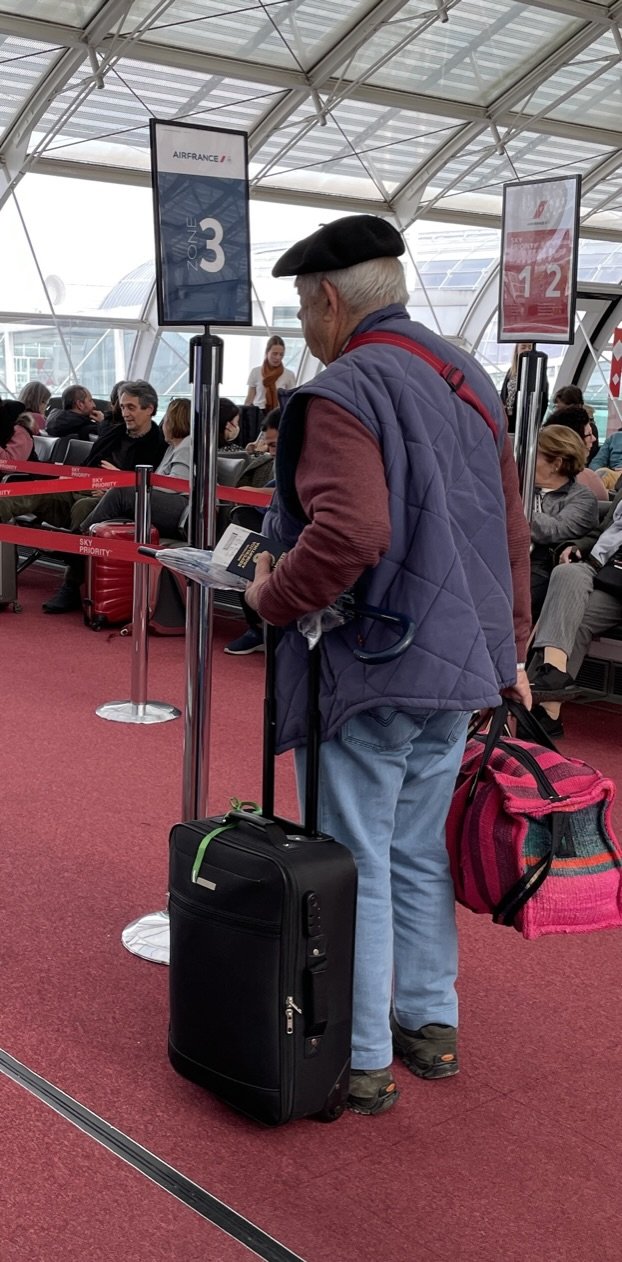
I thought finally another Frenchman in a beret. But no, it was a fellow from Argentina in a boina.
Chas. de Gaulle airport.
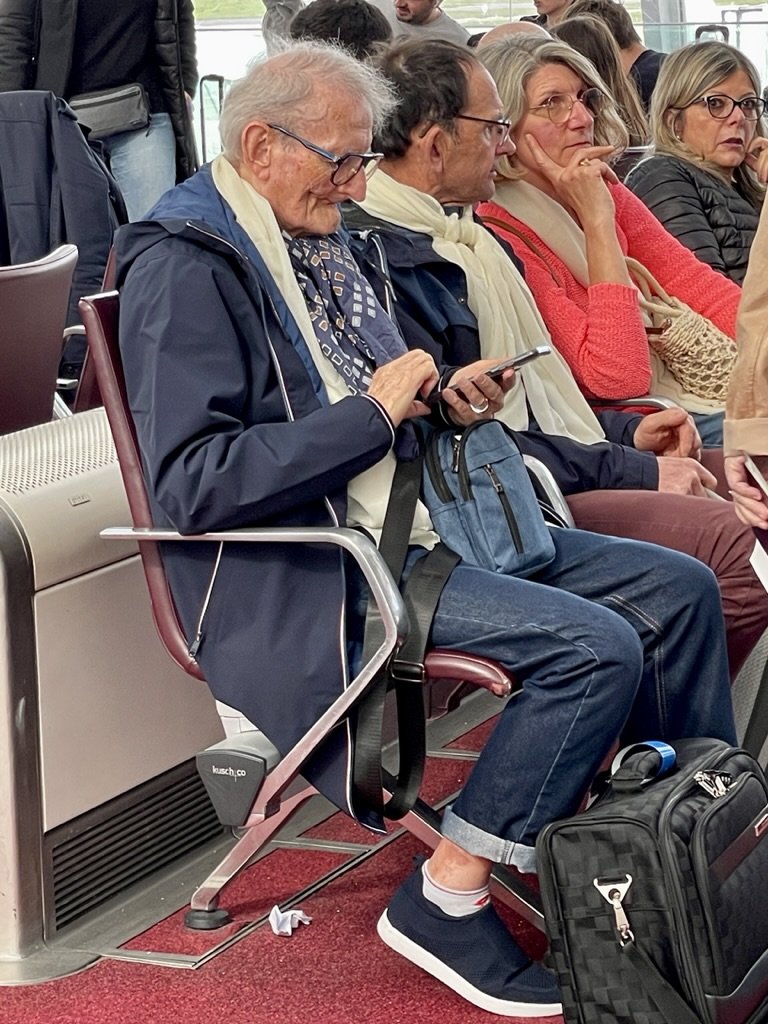
He was part of a church group on a mission led by a priest. They were all wearing white scarves. He must have left his teeth in his checked luggage.
Chas. de Gaulle airport.
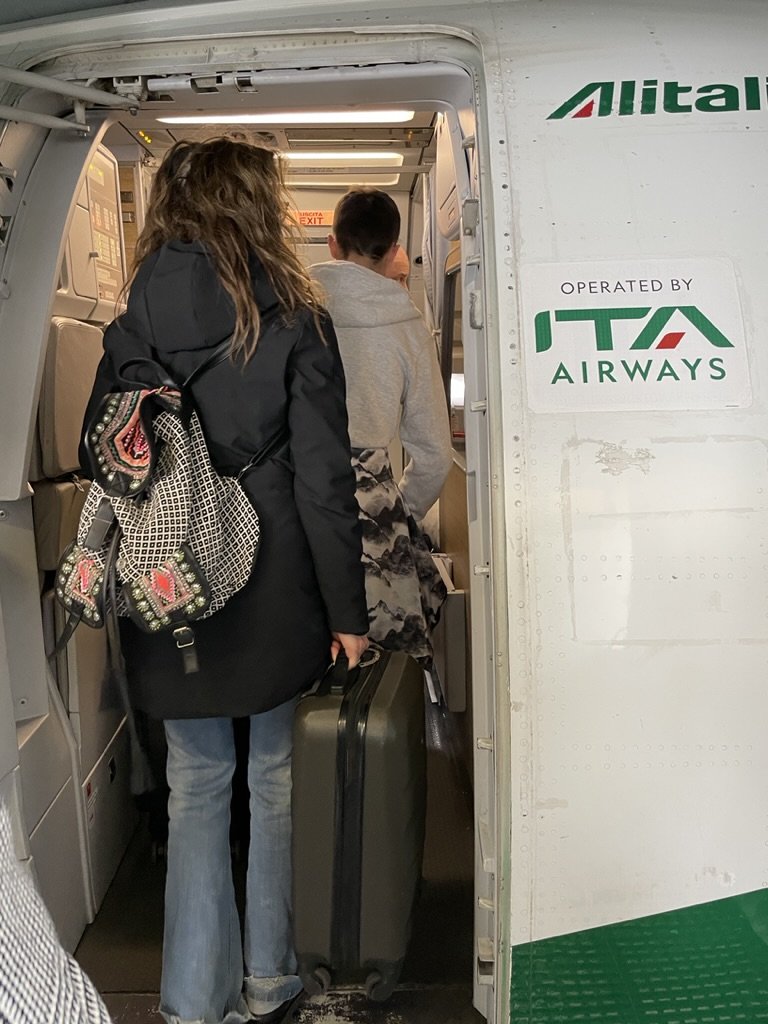
We had never been on an aircraft with seats so close together. Even Naomi felt crammed in. The fellow in front of me reclined his seat back, so I did the same. Then I immediately had to move my seat forward as the woman behind me was breast feeding. When we landed in Rome, the Italians broke out into applause. ?. We never figured out why.
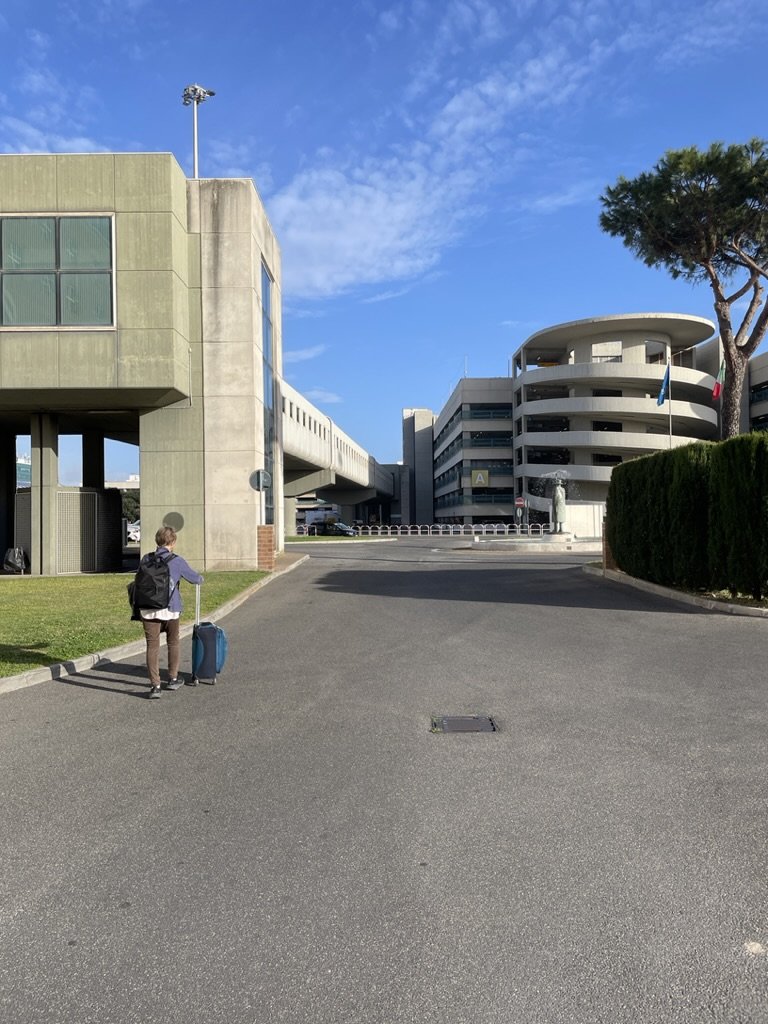
Fiumicino Leonardo da Vinci International Airport
On our way to the Hilton Hotel Rome Airport. Their website said "We’re within a ten-minute walk of Terminals 1, 2, and 3."
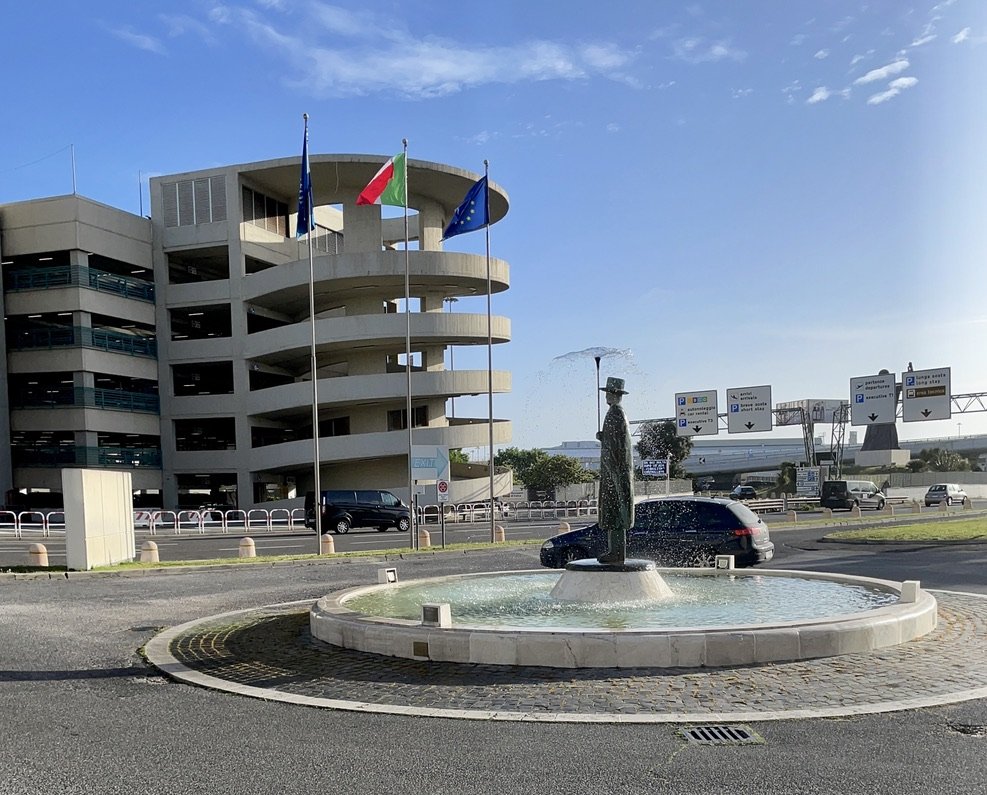
-
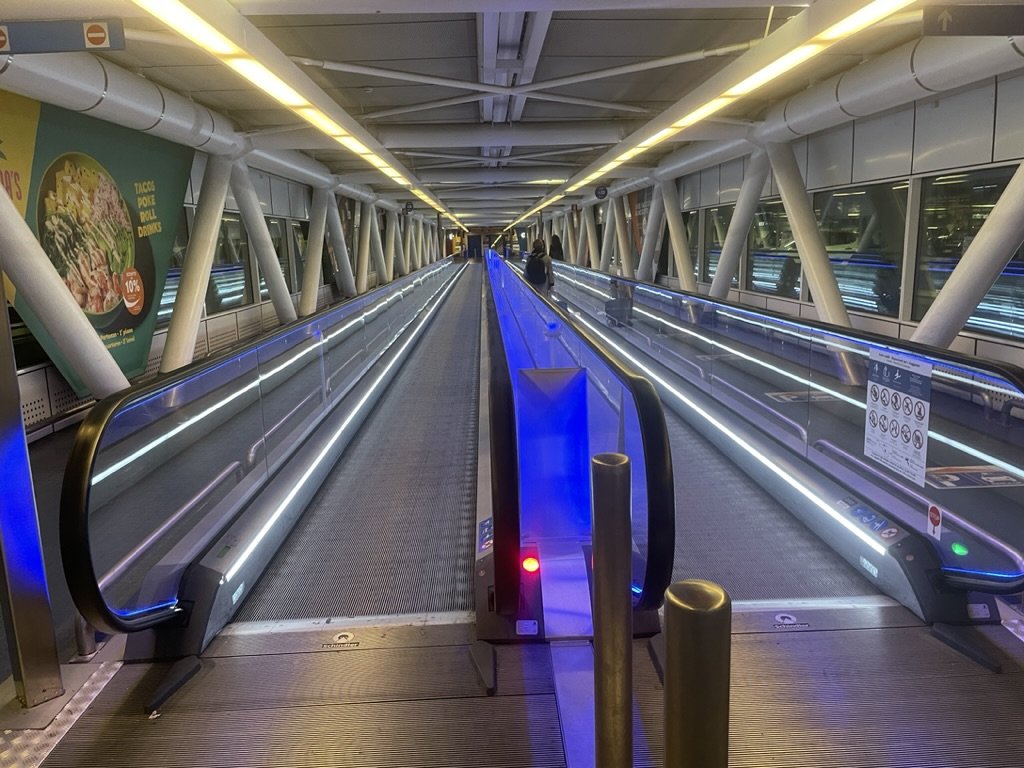
It was more like 30 minutes of several elevators & many, many moving sidewalks.
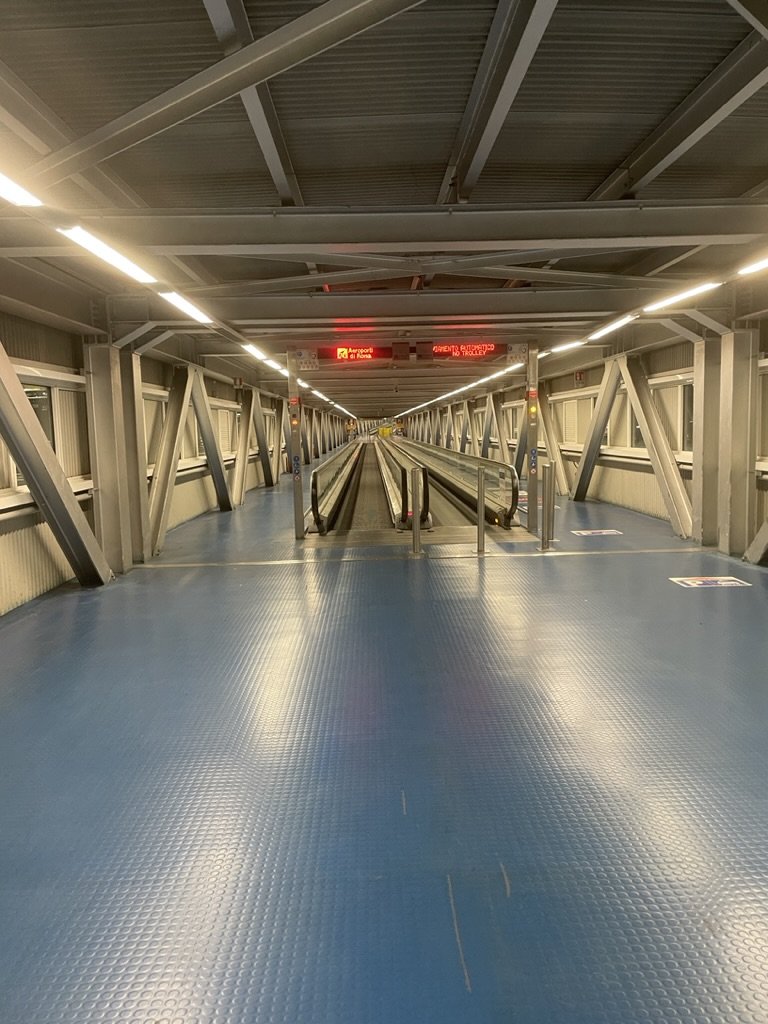
Exhausting!
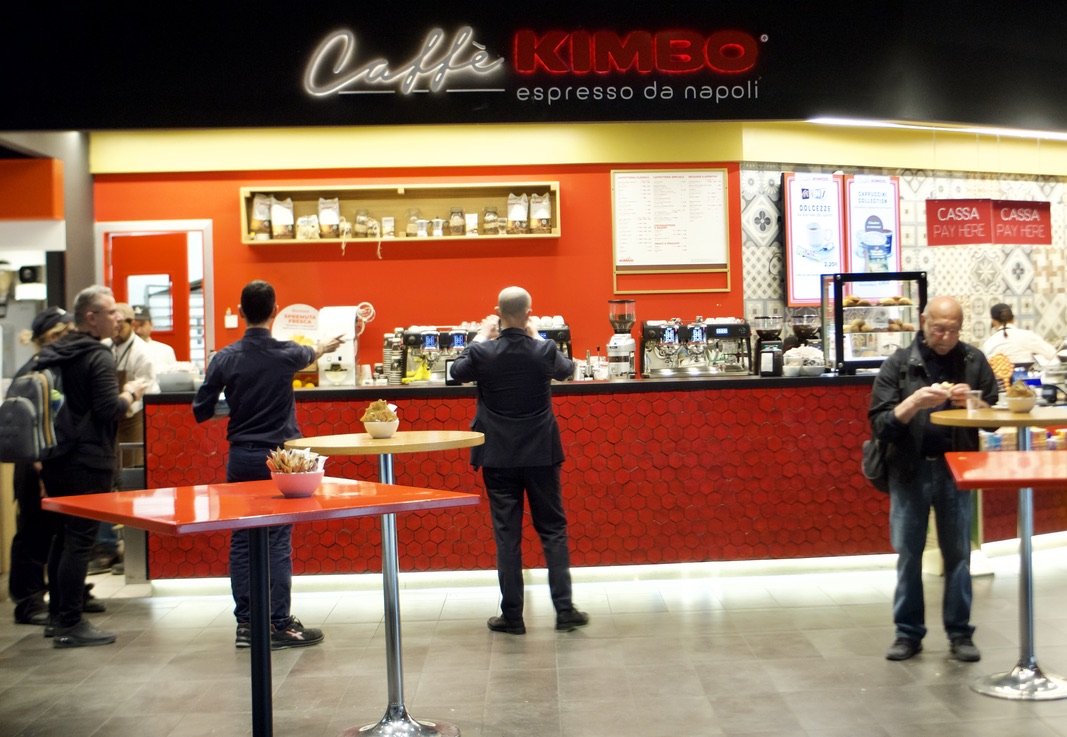
Always espresso available.
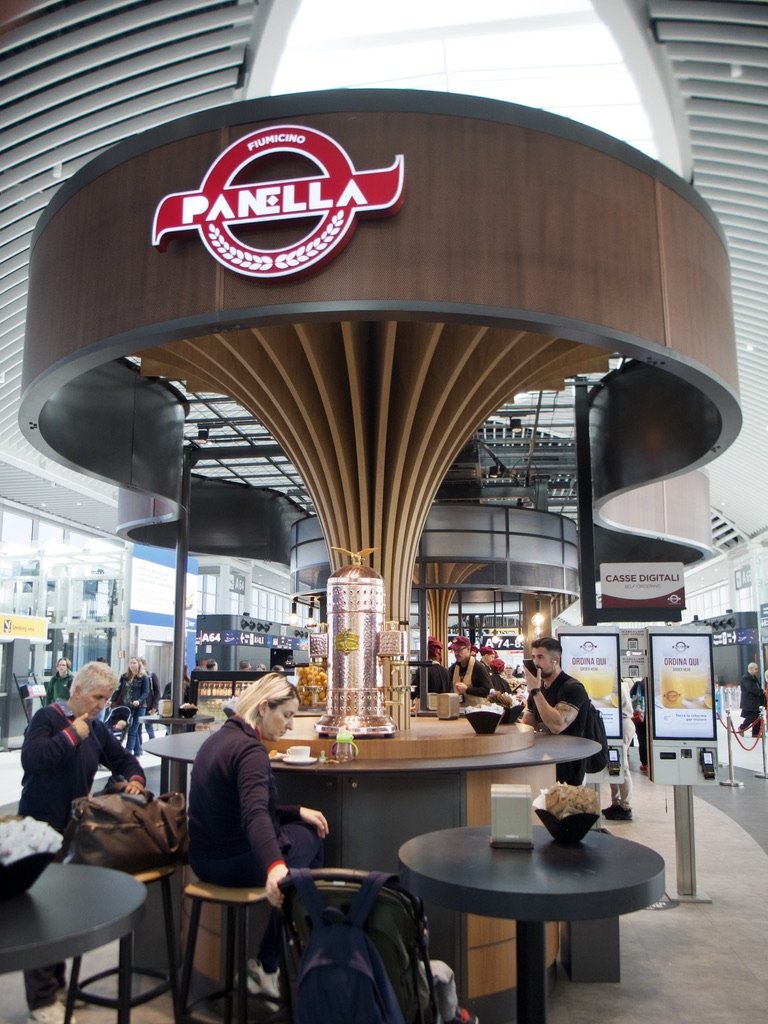
-
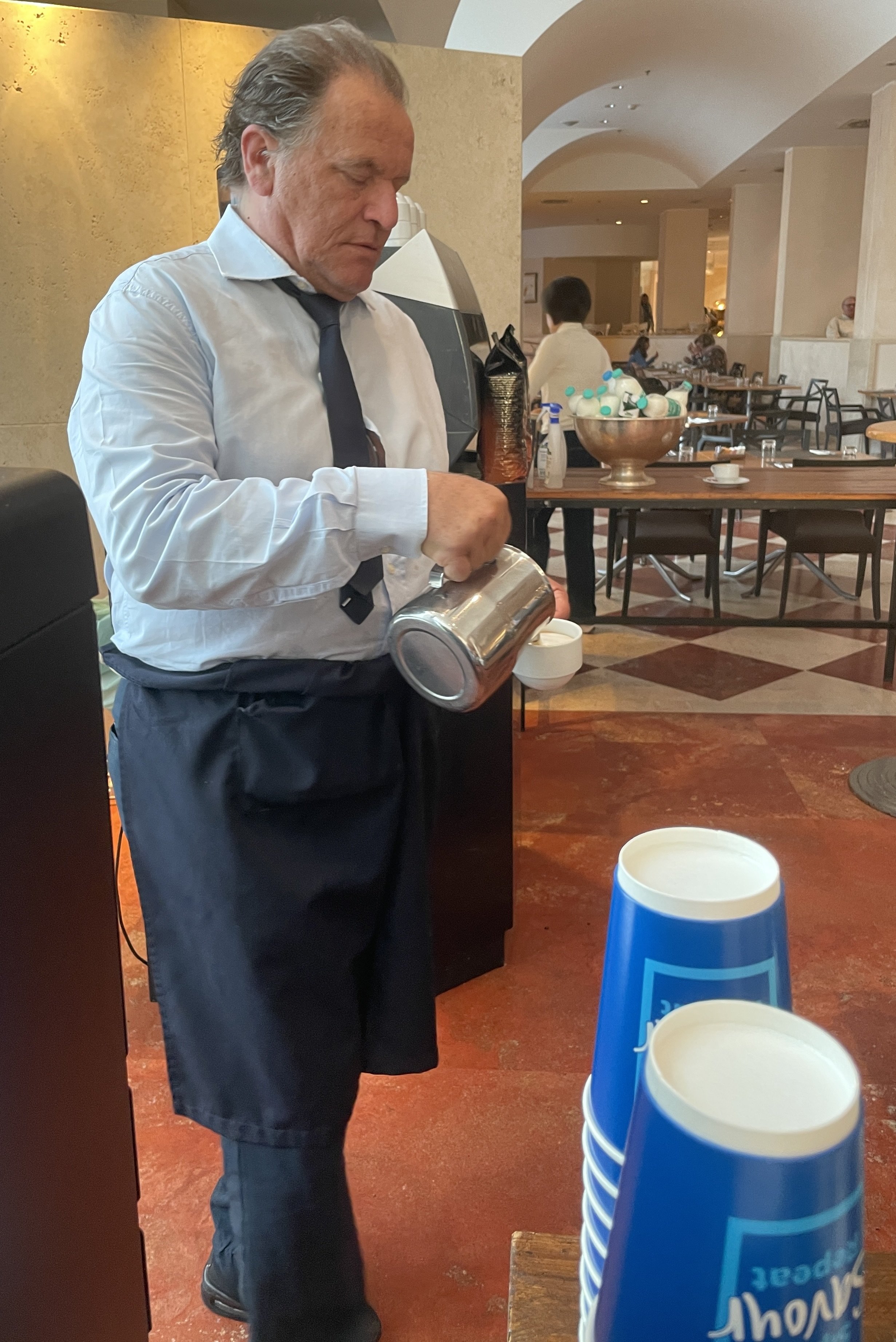
Breakfast colazione - Hilton Rome Airport Hotel, Fiumicino - Le Colonne Restaurant
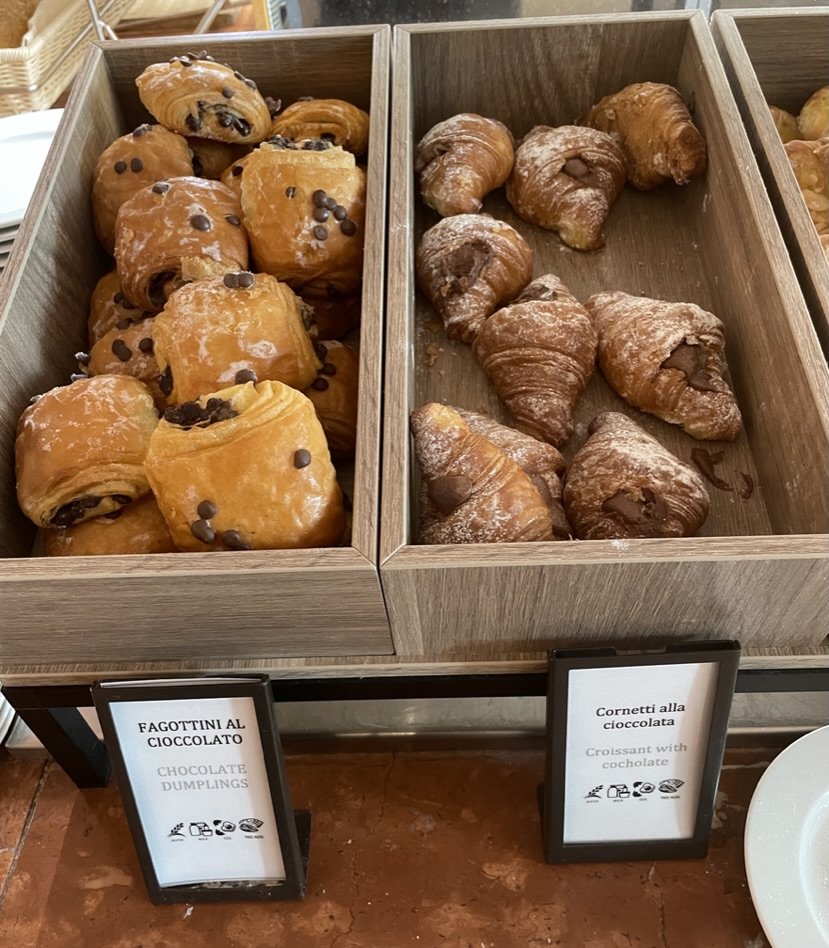
Breakfast colazione - Hilton Rome Airport Hotel, Fiumicino - Le Colonne Restaurant
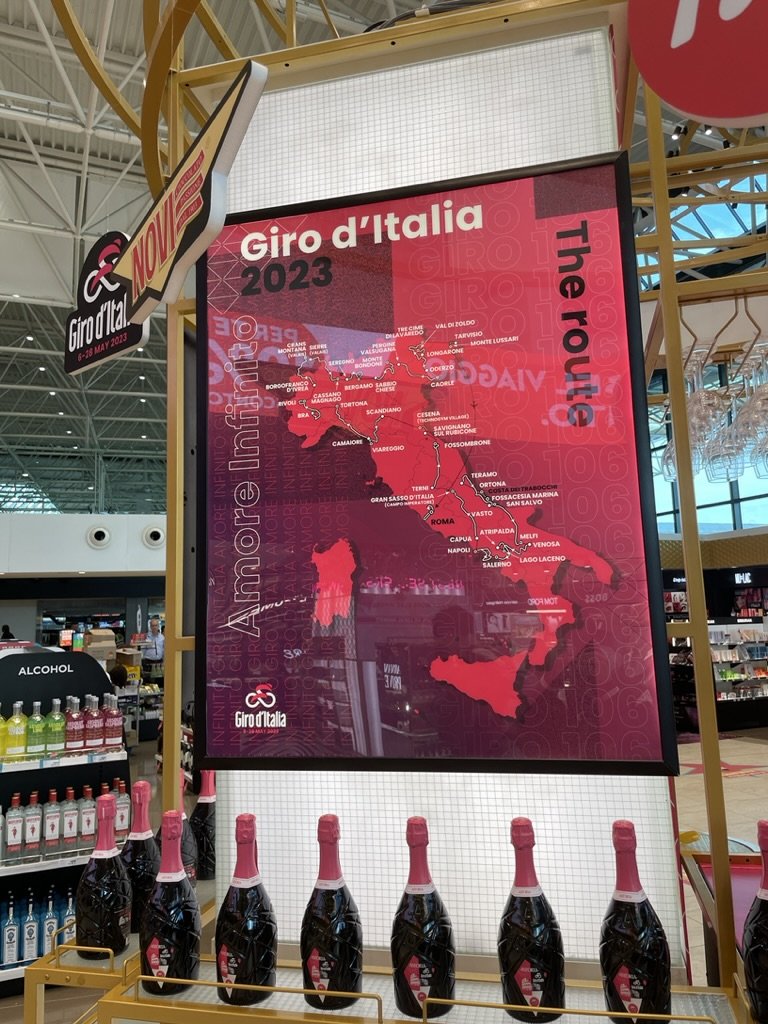
Our visit coincided with the Giro d’Italia. I was biking in the Veneto the last time that happened, in 2007. We changed out bike route to see the riders zoom past near Follina.
The 2023 Giro was not going to be in Sicily.
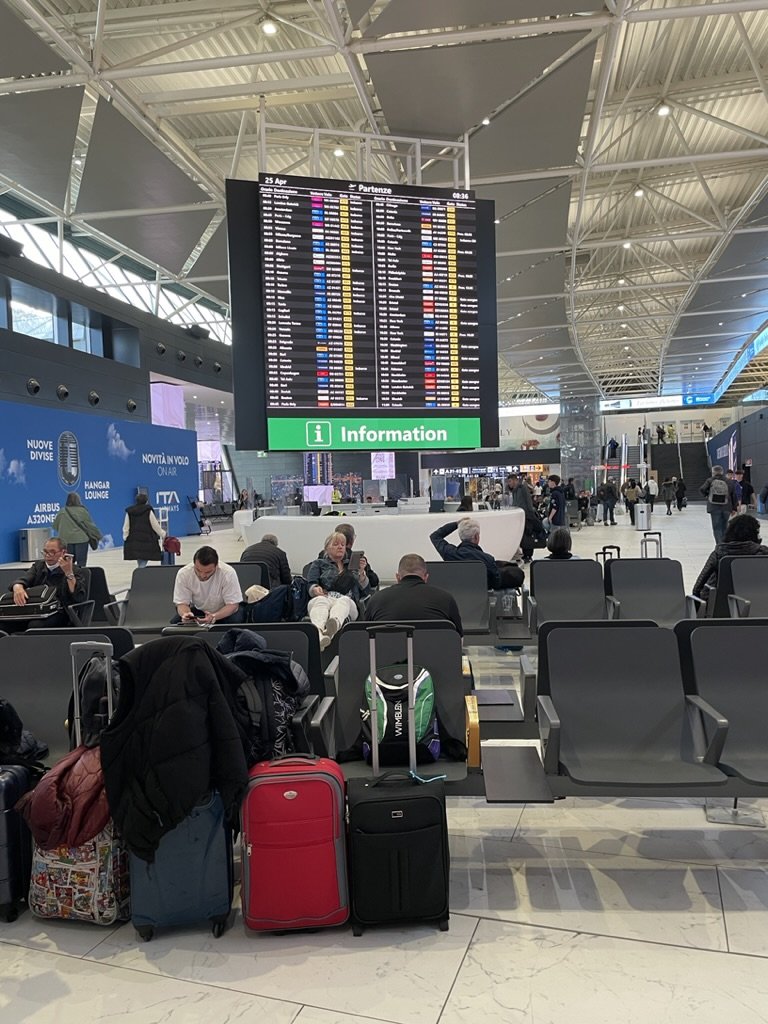
Fiumicino Leonardo da Vinci International Airport is huge.
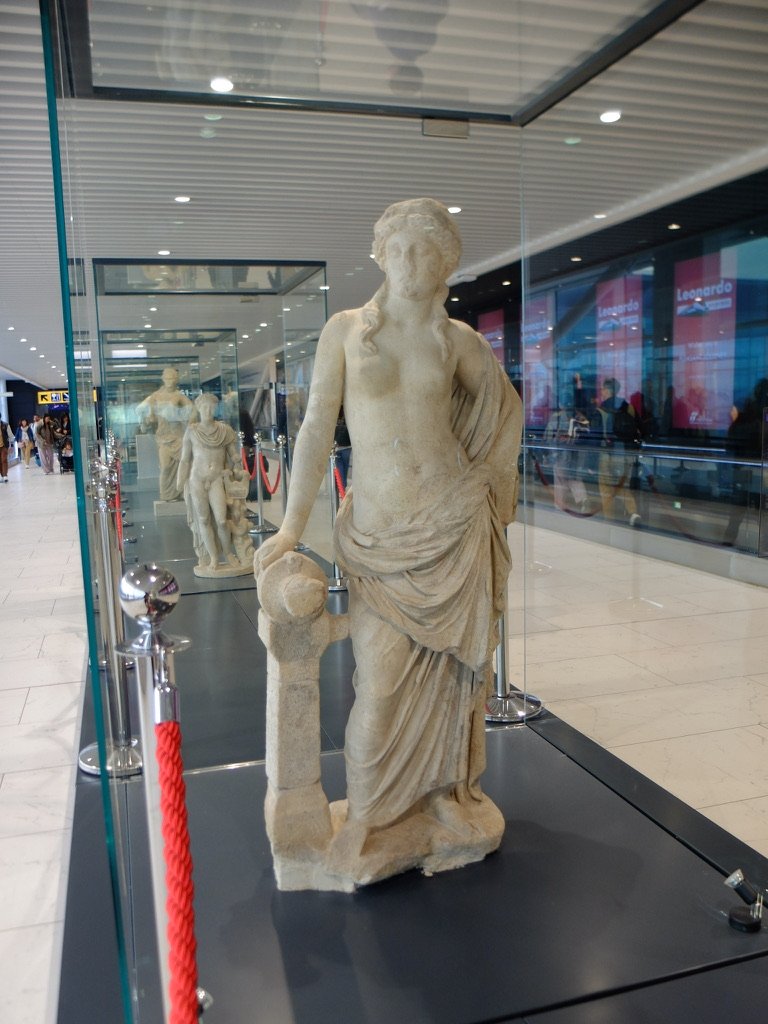
-

He was on the phone & vaping. She walked behind carrying their coffees (caffè).
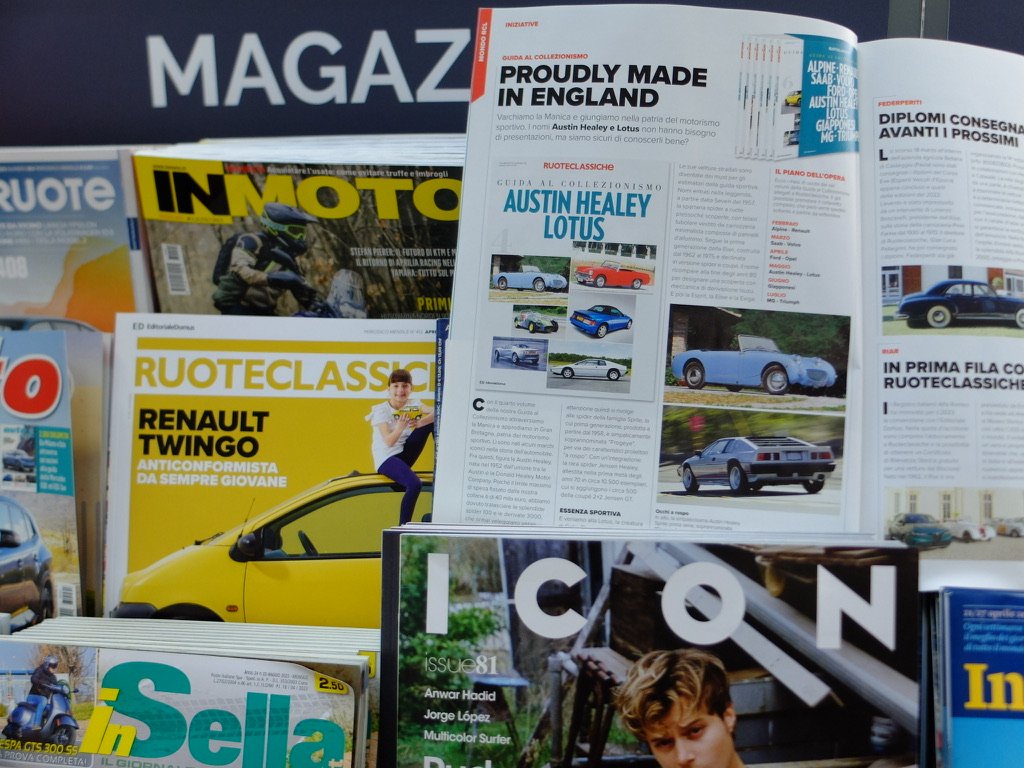
When we were in France, I loved seeing & saying Twingos (by Renault).
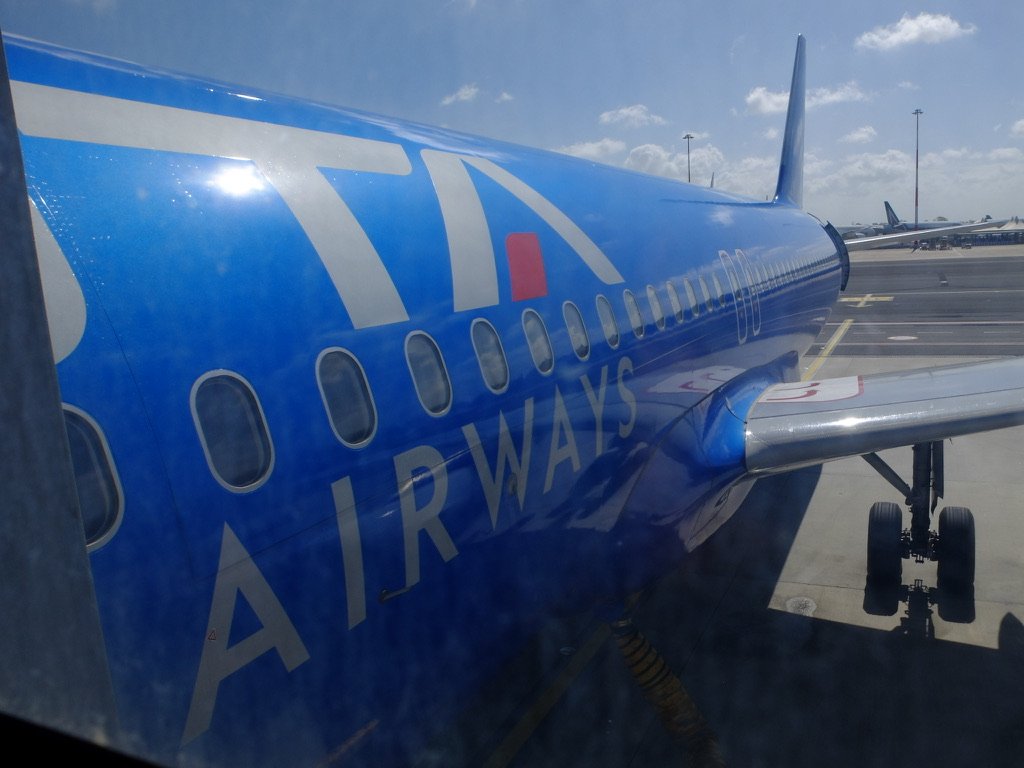
Back at Fiumicino Leonardo da Vinci International Airport for our ITA flight to Palermo. Boarding was like a cattle call. But we were ready for it (although still surprised) after the pushing we experienced the day before on our deplaning from Paris.
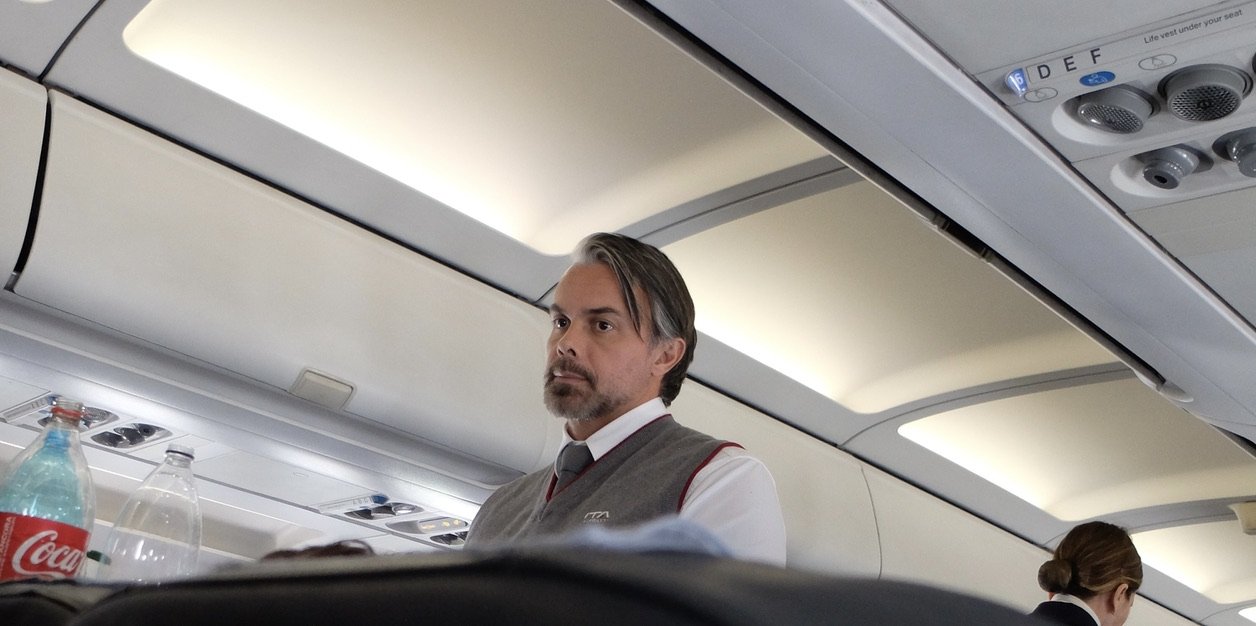
Crammed in again. But nice service.
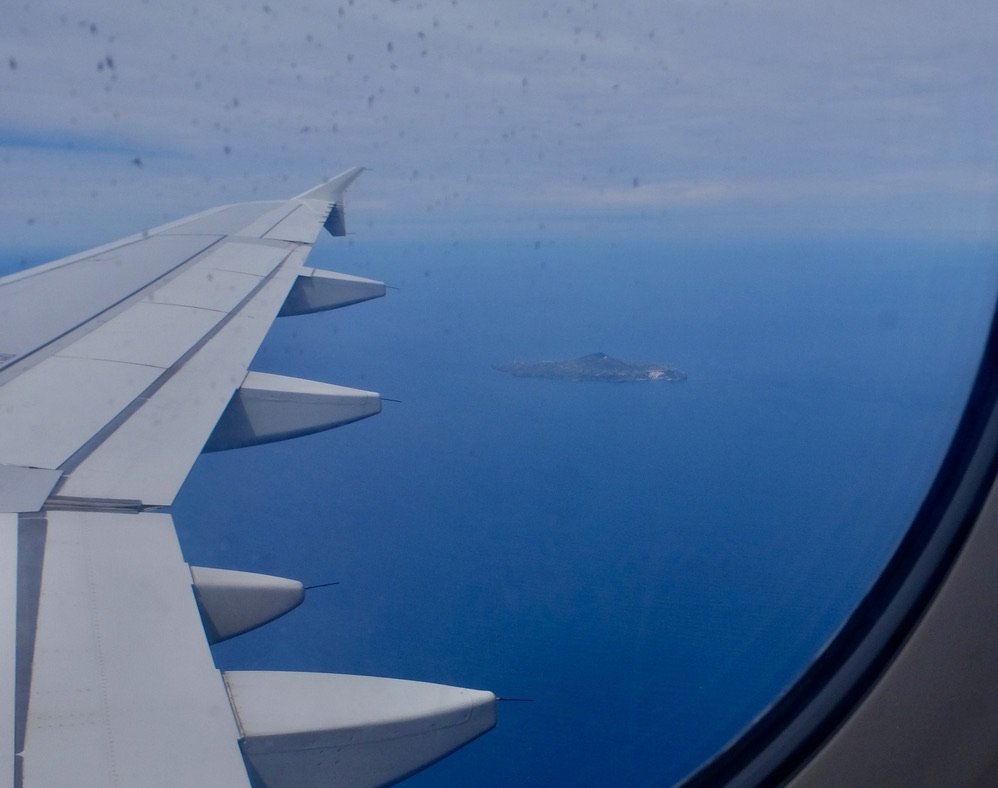
I guessed correctly that this was the Isola di Ustica where we’d be visiting in a few days.
We would be landing soon as I knew the hydrofoil ferry did the trip in two hours. I had a feeling our ITA craft would be faster.
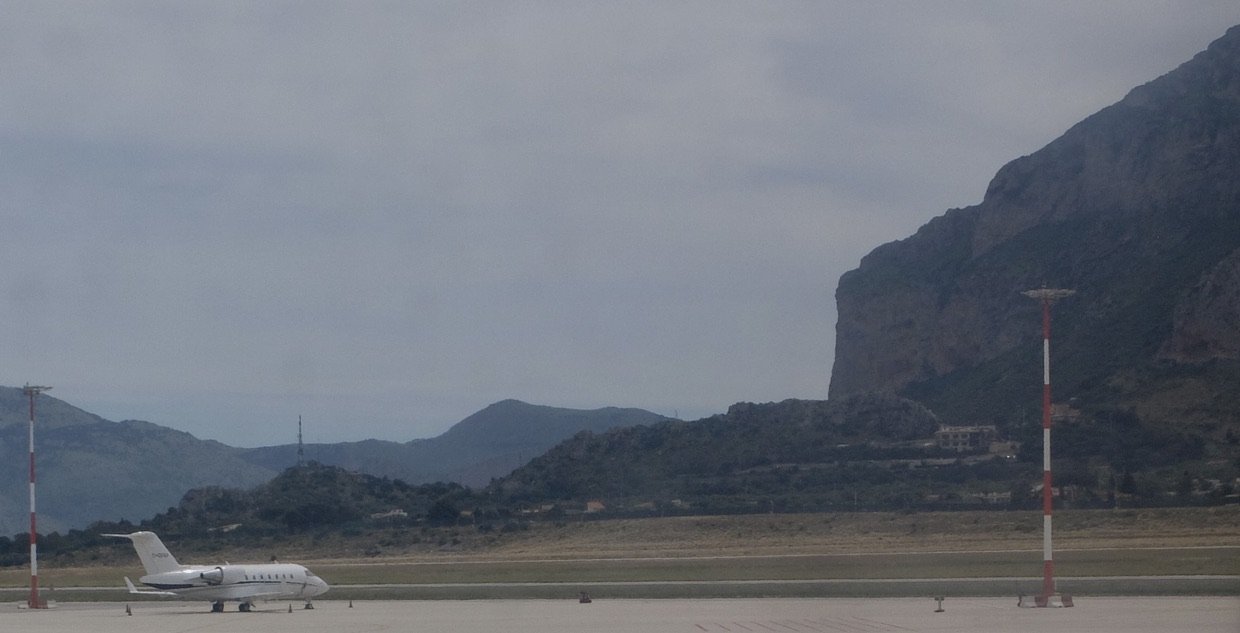
Palermo, the capital & Sicily’s largest city, is on one of the largest plains on the island. The other plain is Catania, the island’s second largest city, on the other side of Sicily. The rest of the island’s terrain is rugged.
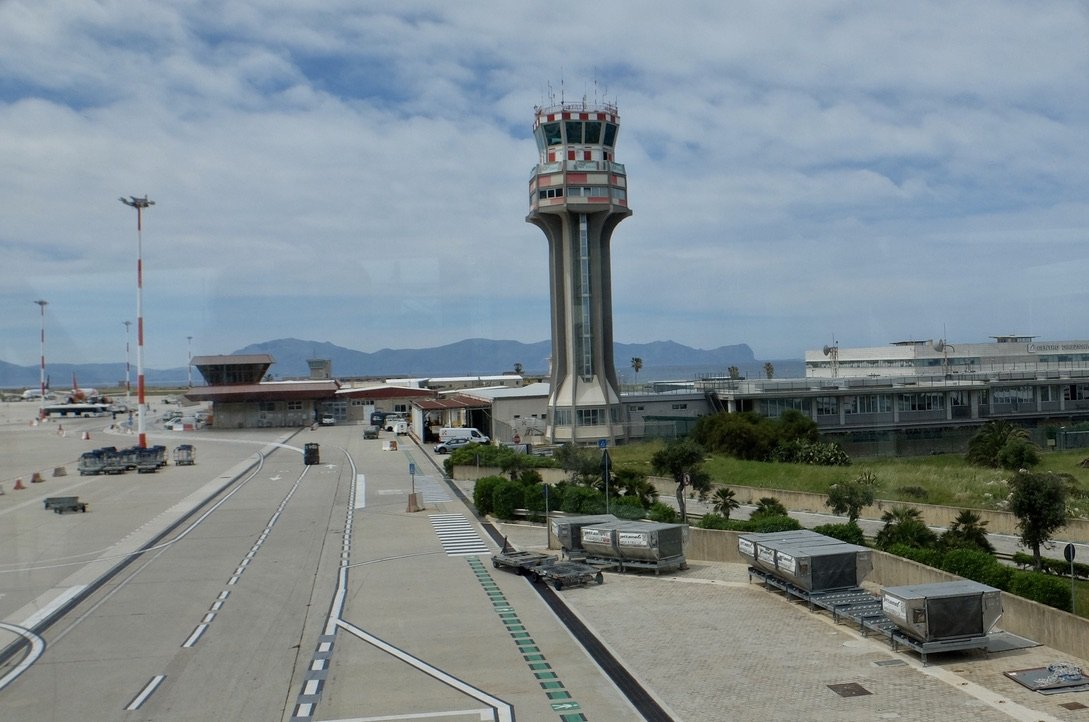
Some architect had fun here.
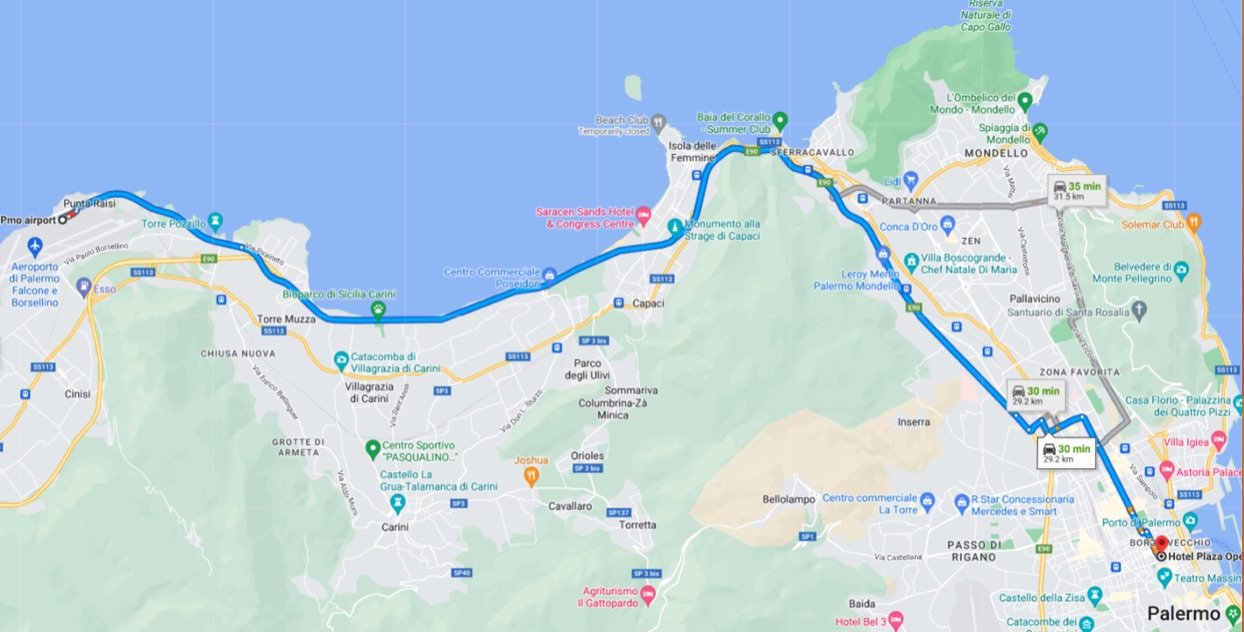
Our driver was not a guide & his English okay but he did point our some sites. As we entered the outskirts of the new part of Palermo, there was a monument in the hillside to our right. “…The Capaci bombing (Italian: Strage di Capaci) was a terror attack by the Sicilian Mafia that took place on 23 May 1992 on Highway A29, close to the junction of Capaci, Sicily.” “The assassinations of the anti-Mafia magistrate Giovanni Falcone, another judge who was his wife, and their three bodyguards, on the highway to the Palermo airport, by a Mafia-planted car bomb. The murders caused an anti-Mafia backlash throughout Italy, perhaps nowhere more so than in Palermo itself, an uproar that broke the Mafia’s grip on the city.”

-
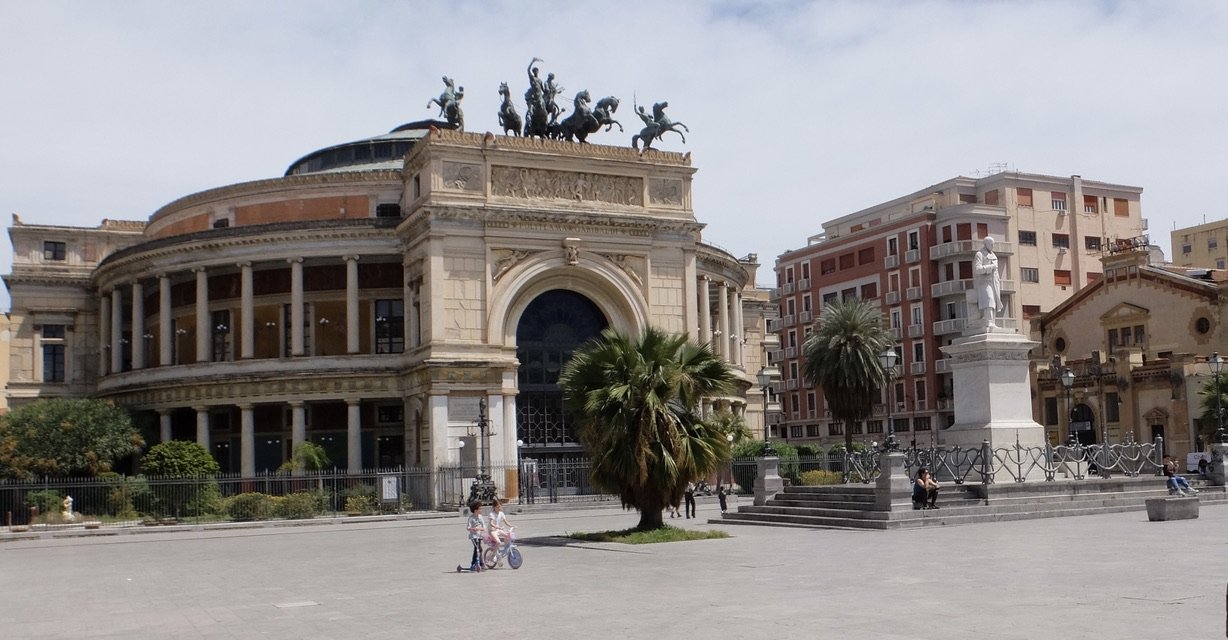
Teatro Politeama Garibaldi c. 1869 in the Piazza Ruggero Settimo also houses the Orchestra Sinfonica Siciliana.
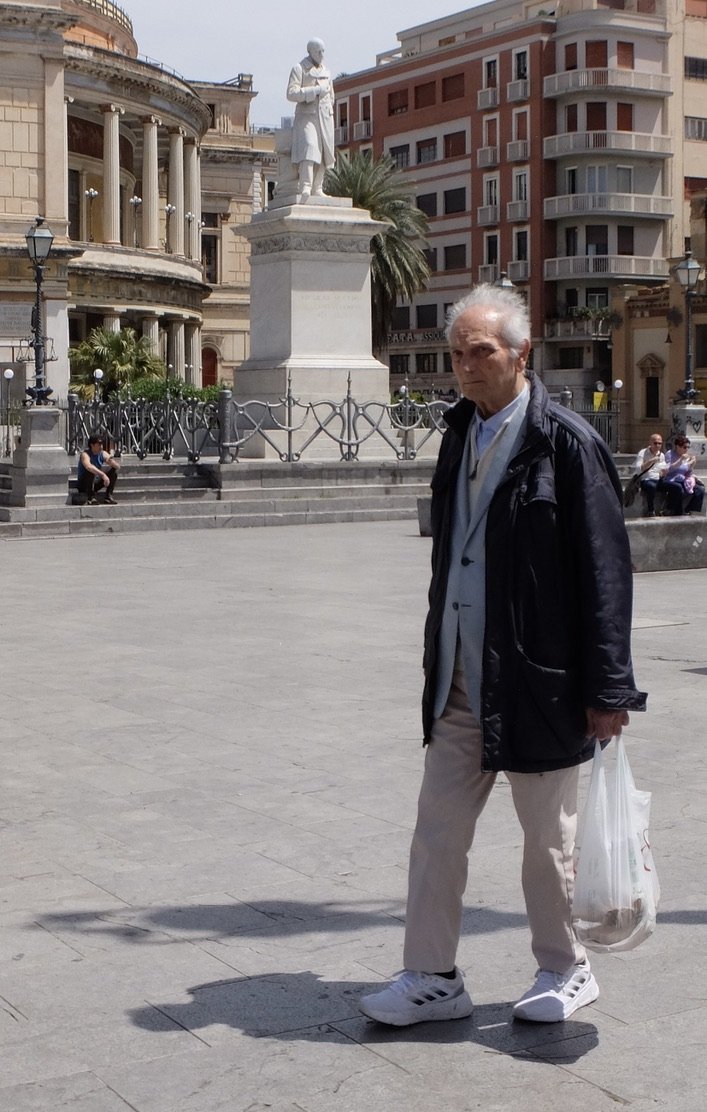
-
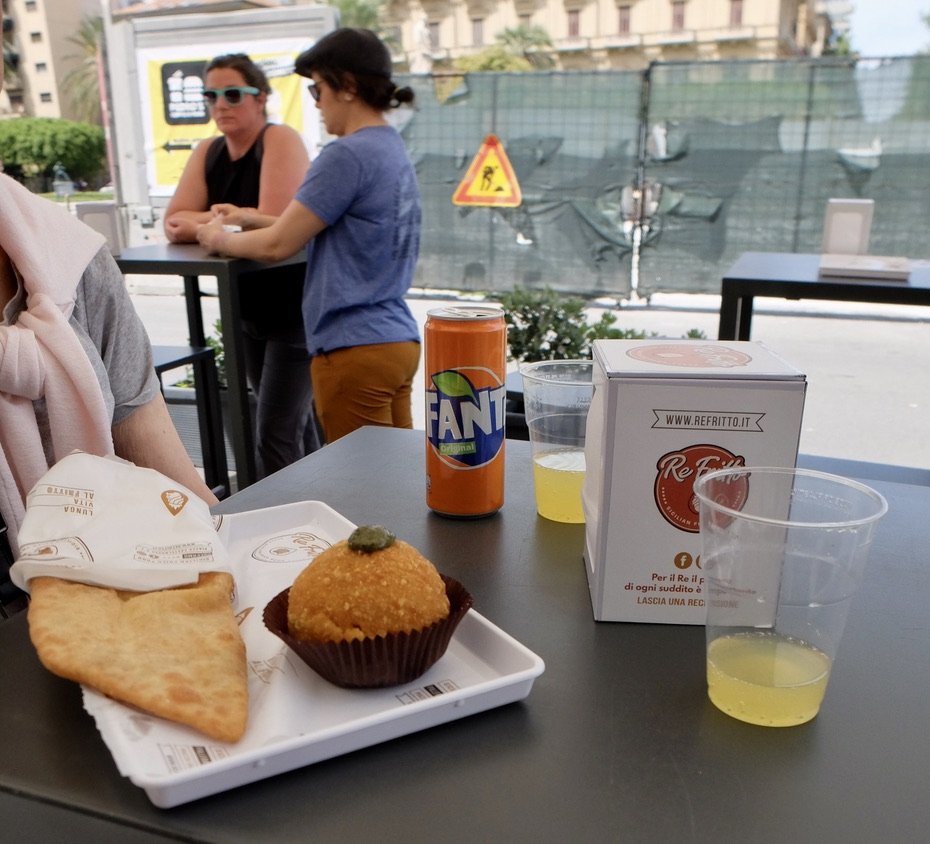
Street food is a big draw in Palermo.
I had watched several You Tube videos about it. So, I knew we had to try arancini & fried pizza. Perfect with a FANTA.
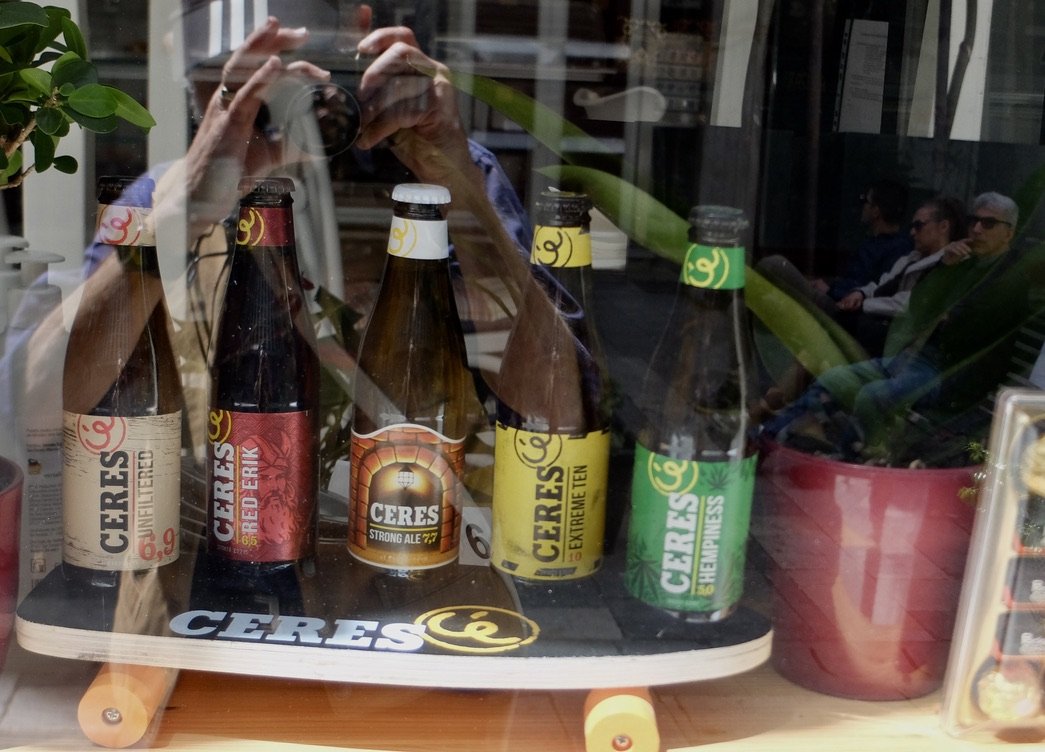
I saw this in a window display & noted ABV’s of 7.7 & 10. Why waste the calories? I had to find this beer & try it.
Later in our visit to Palermo, I did & discovered its origin.
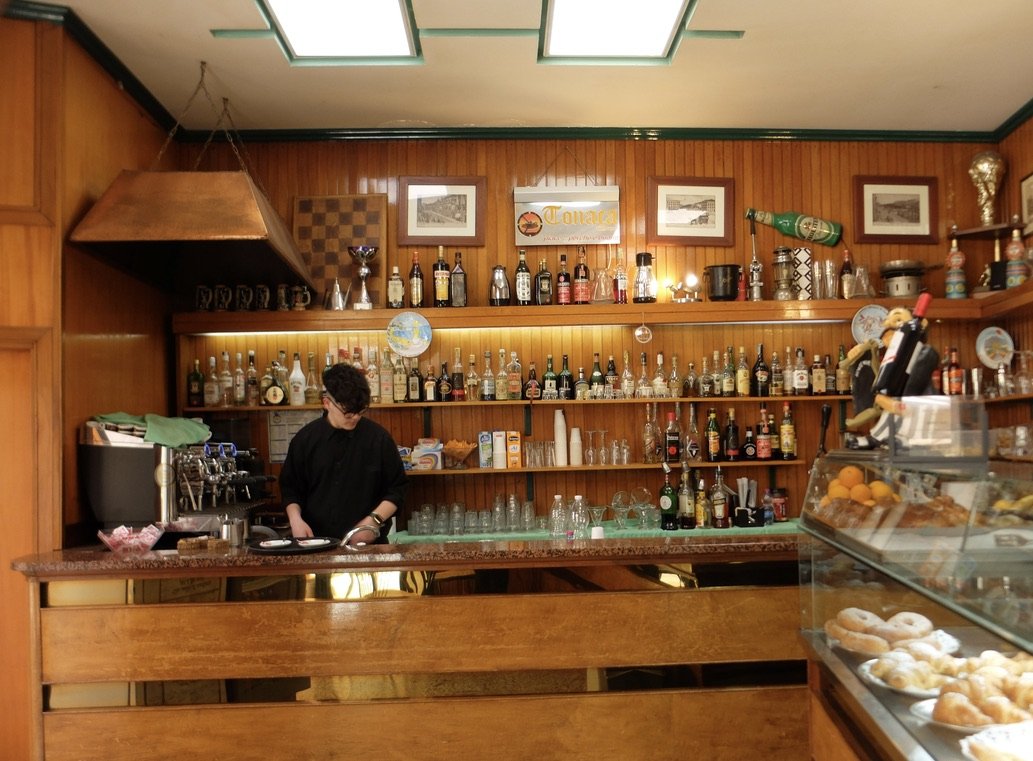
-
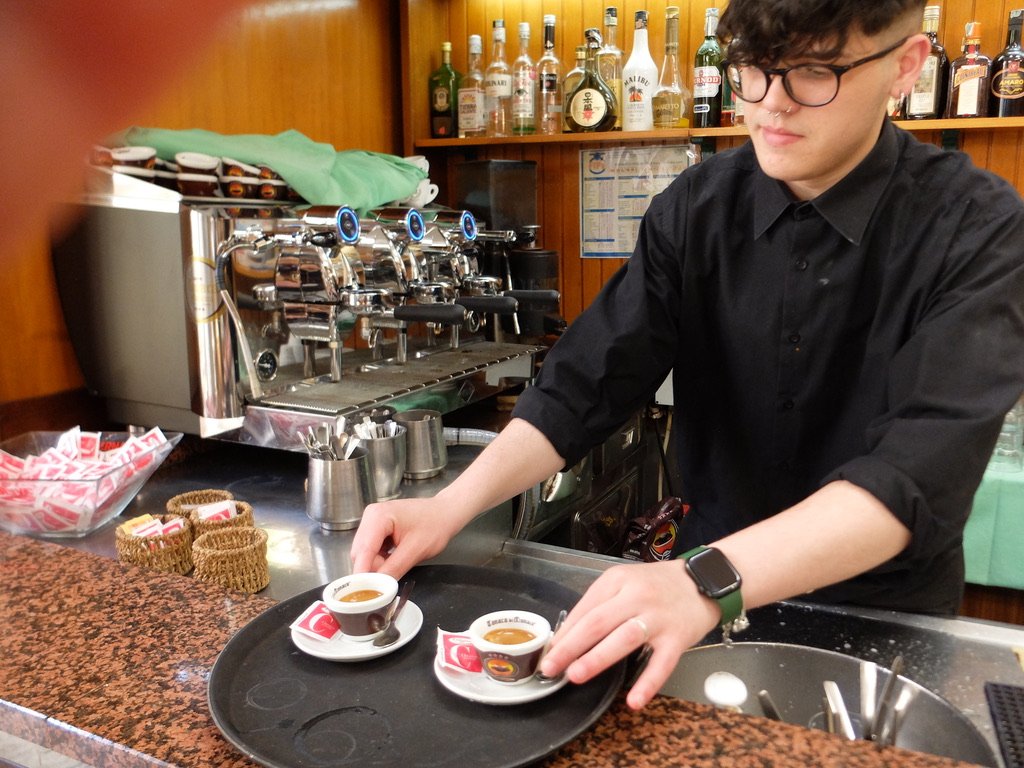
-

-
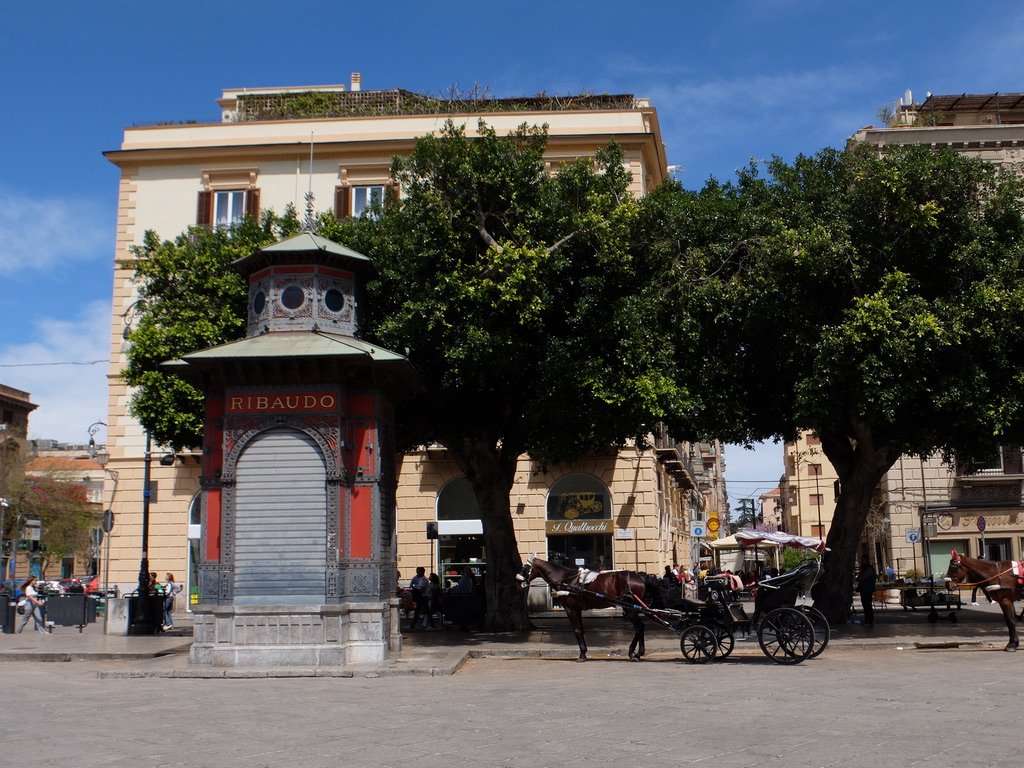
In the Piazza Verdi, closed but across the way, another…
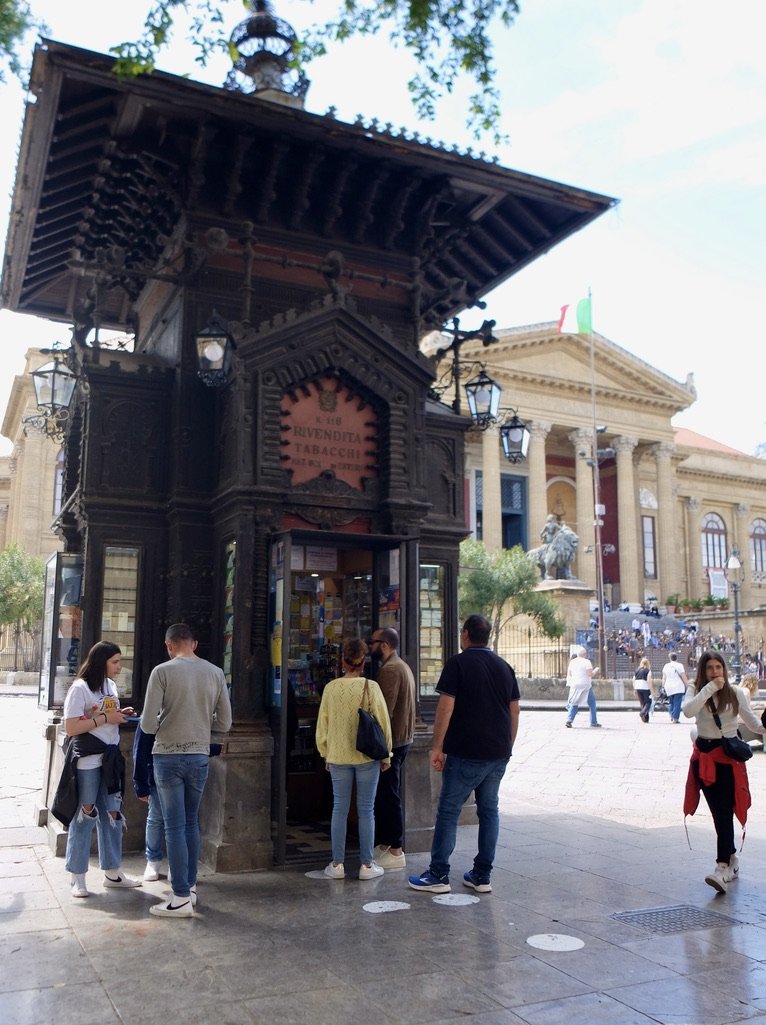
...open for business.

-
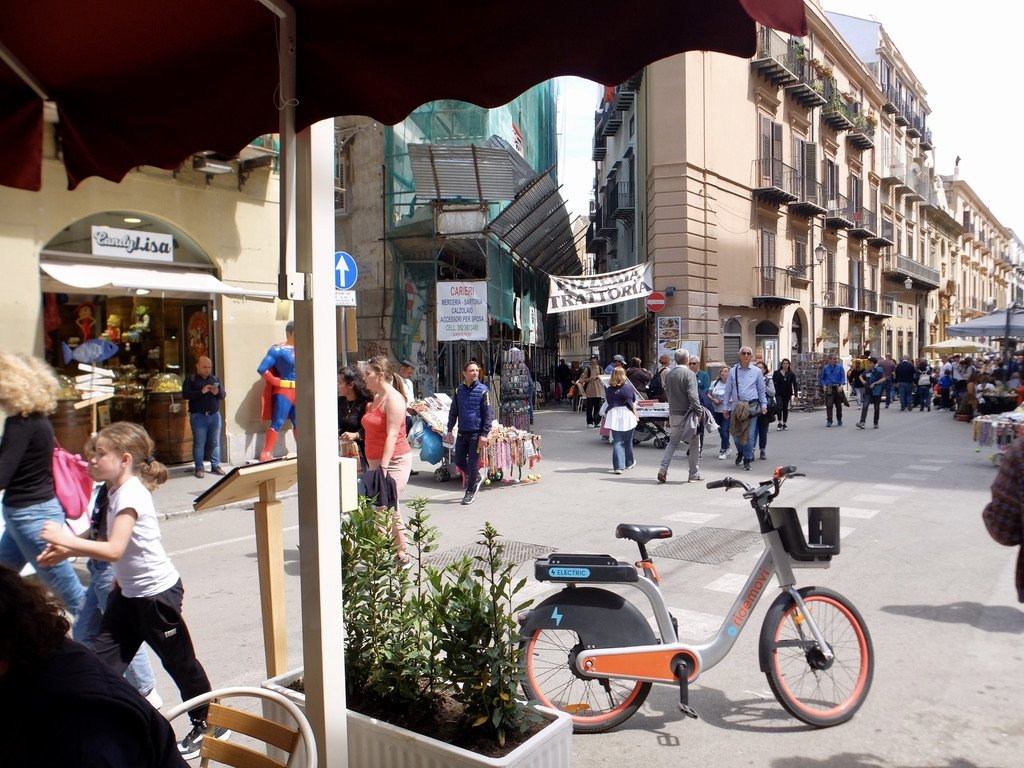
-

The locals & tourists, love la passeggiata. “The art of taking a walk in the evening, an Italian social ritual.” We indulged.
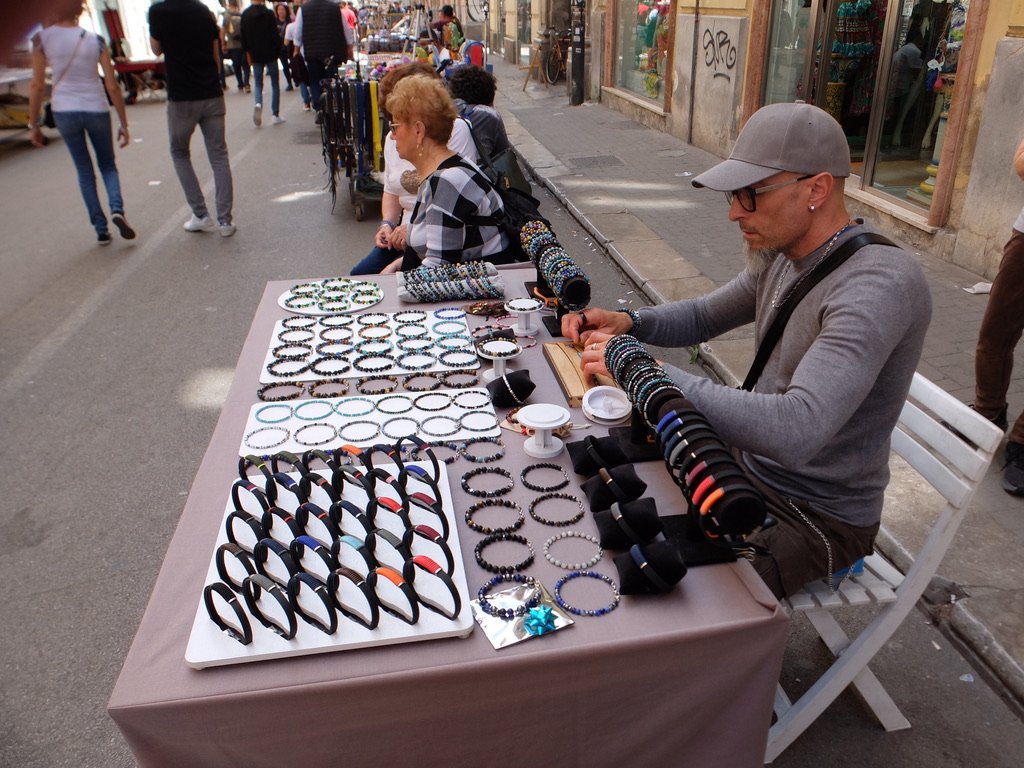
Many vendors. We found that the better crafts people would be there one day & maybe not the next.
We bought bracelets from this fellow.
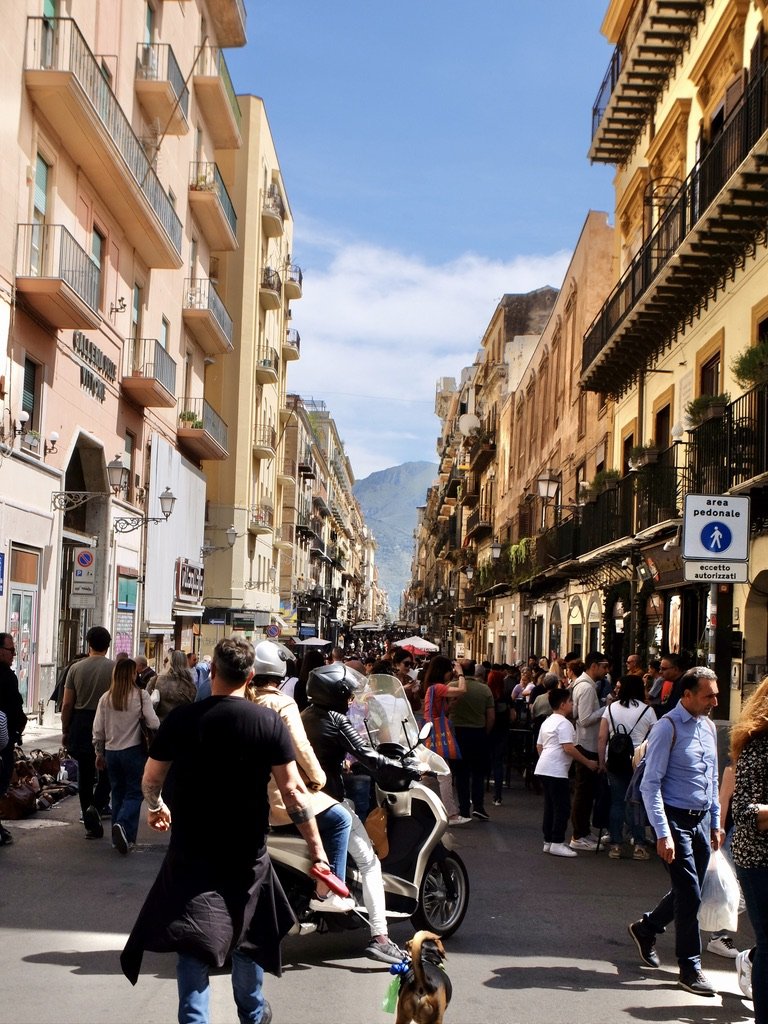
The art of maneuvering a scooter through la passeggiata.
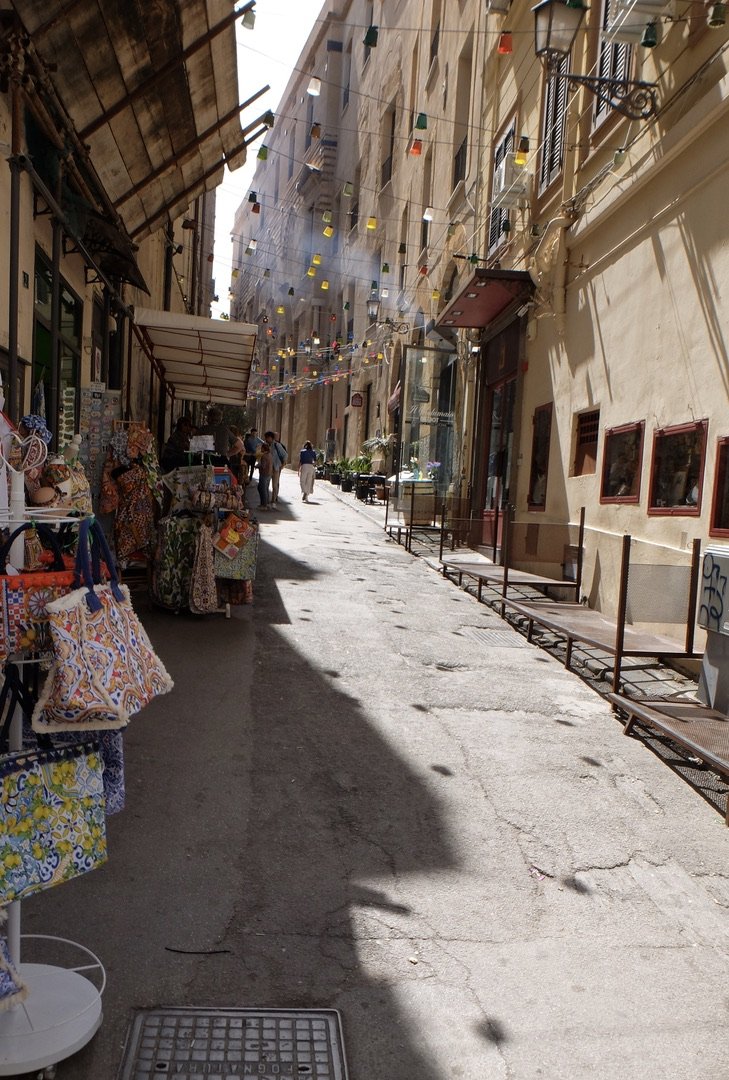
-
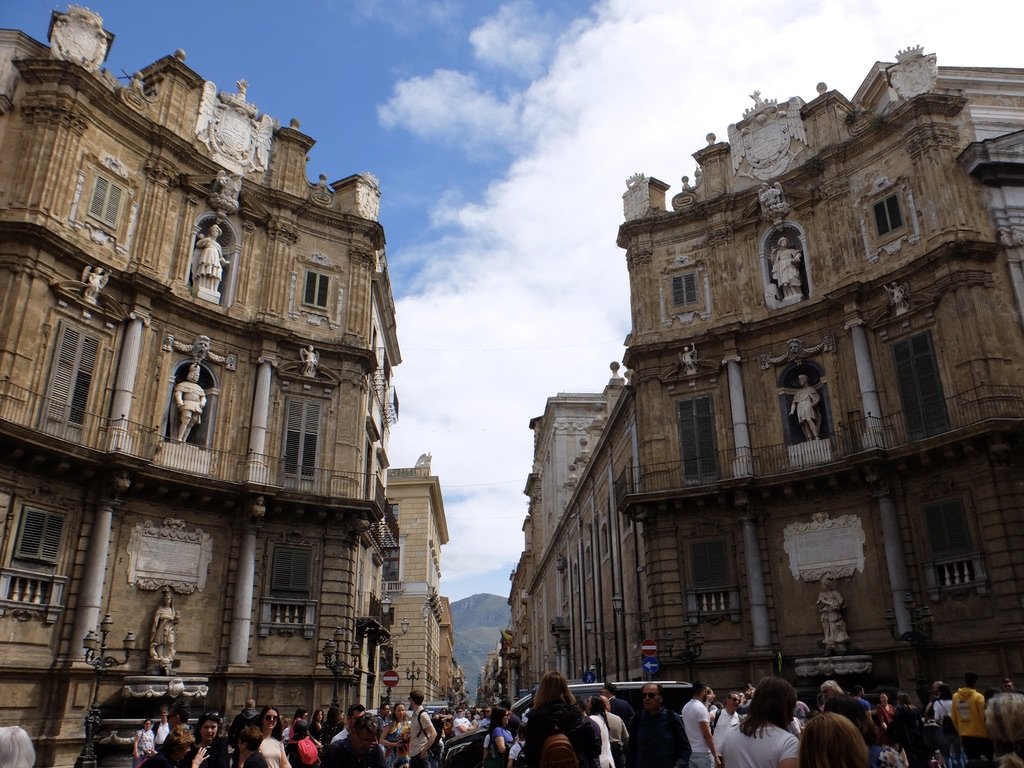
I Quattro Canti — The Four Corners of Palermo.
“This baroque square formed in an octagon is known officially as Villena Square.” c. 1609.
“AKA “theater of the sun” thanks to the soft play of sunlight on the four façades of the palaces.”

“The Praetorian Palace…it houses the mayor and the offices of the municipality of Palermo.”
In front is the Fontana Pretoria. “Between 18th century and 19th century, the fountain was considered a sort of depiction of the corrupt municipality of Palermo. For this reason and because of the nudity of the statues, the square became known as "Piazza della Vergogna" (Square of Shame).”
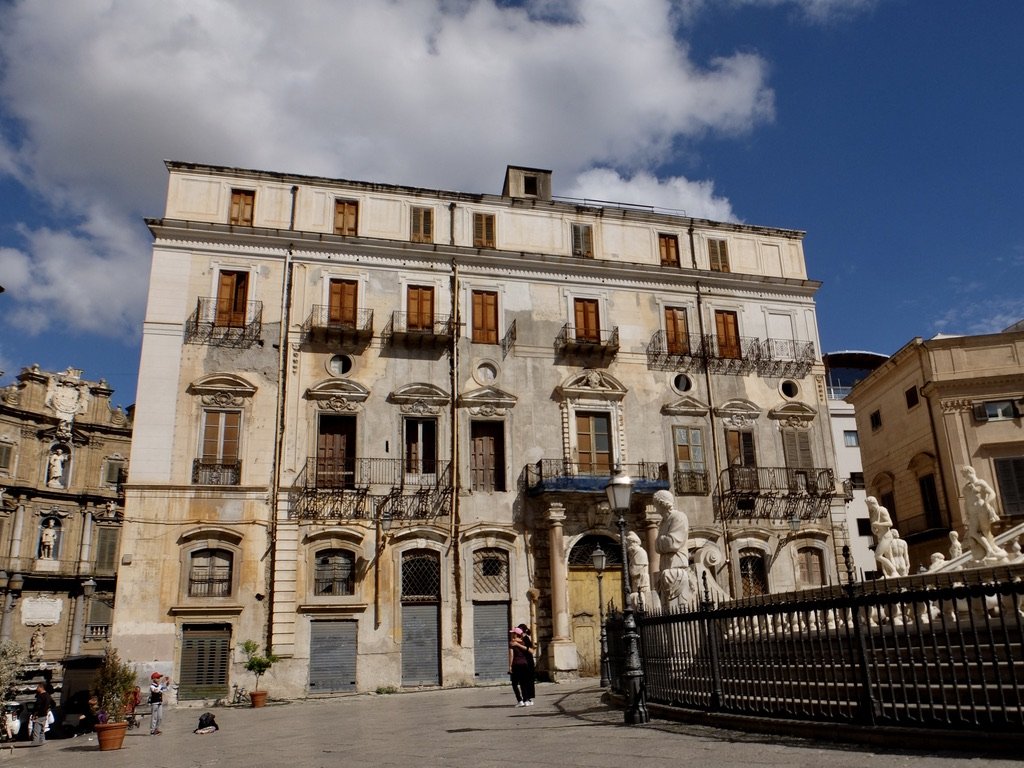
We were told that this palazzo, across from the fontana, should be the “building of shame.” The relatives, who each own a piece of the building cannot agree on anything & it’s just deteriorating.
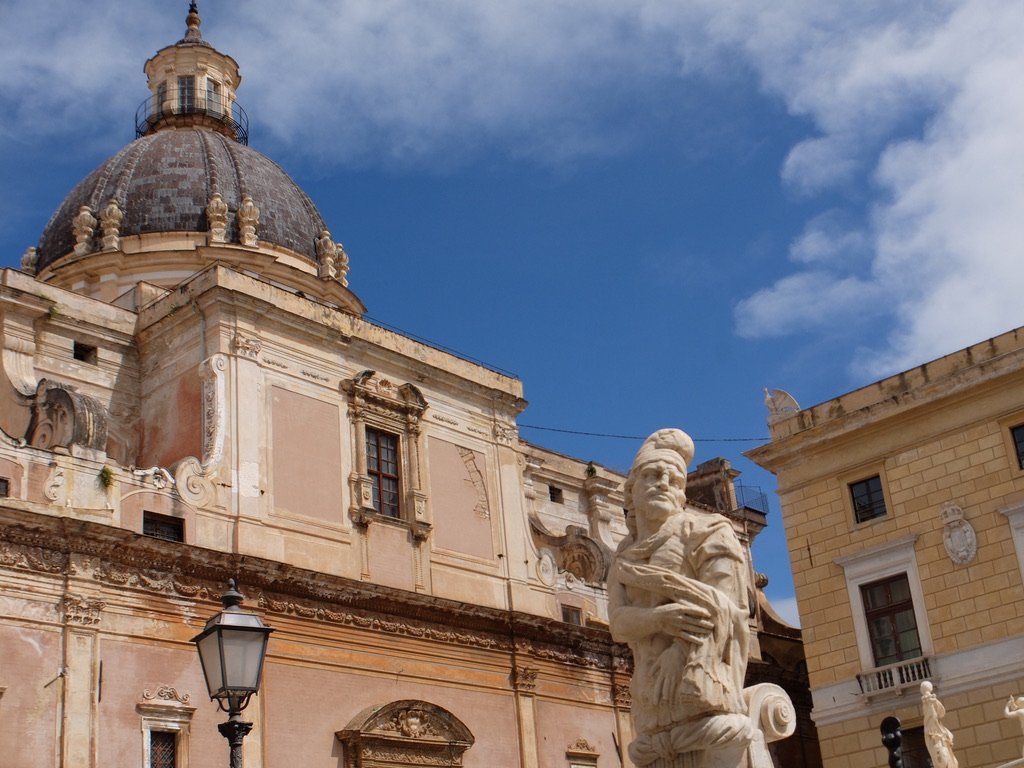
-
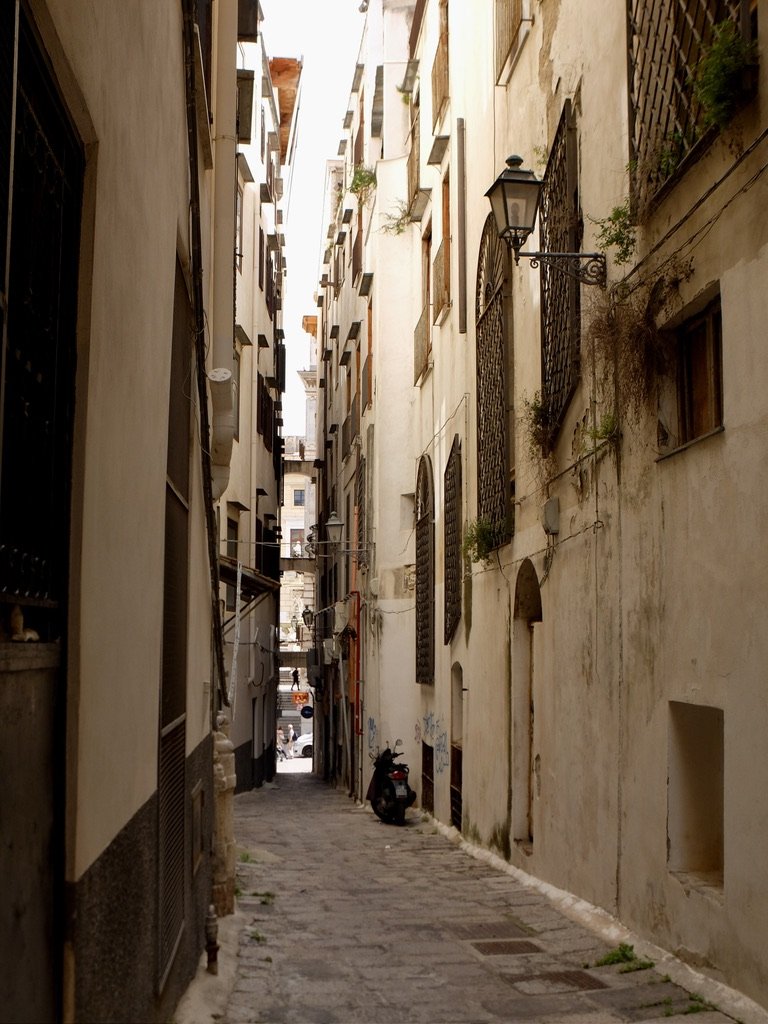
-
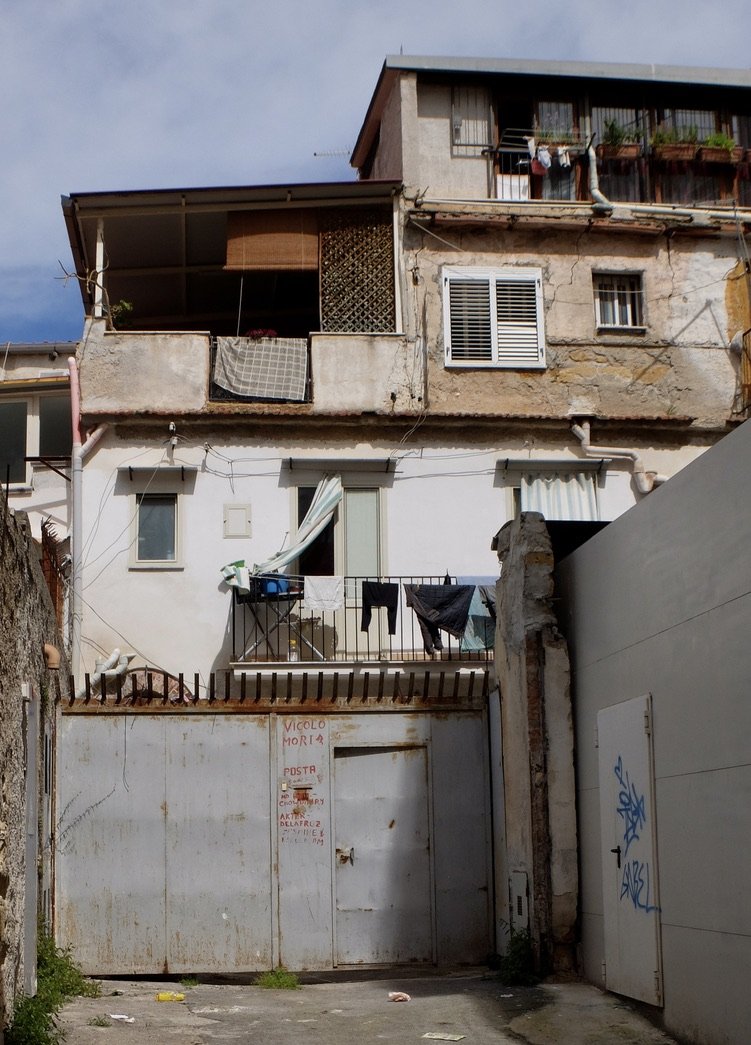
We wandered through some of the back streets & alleys.
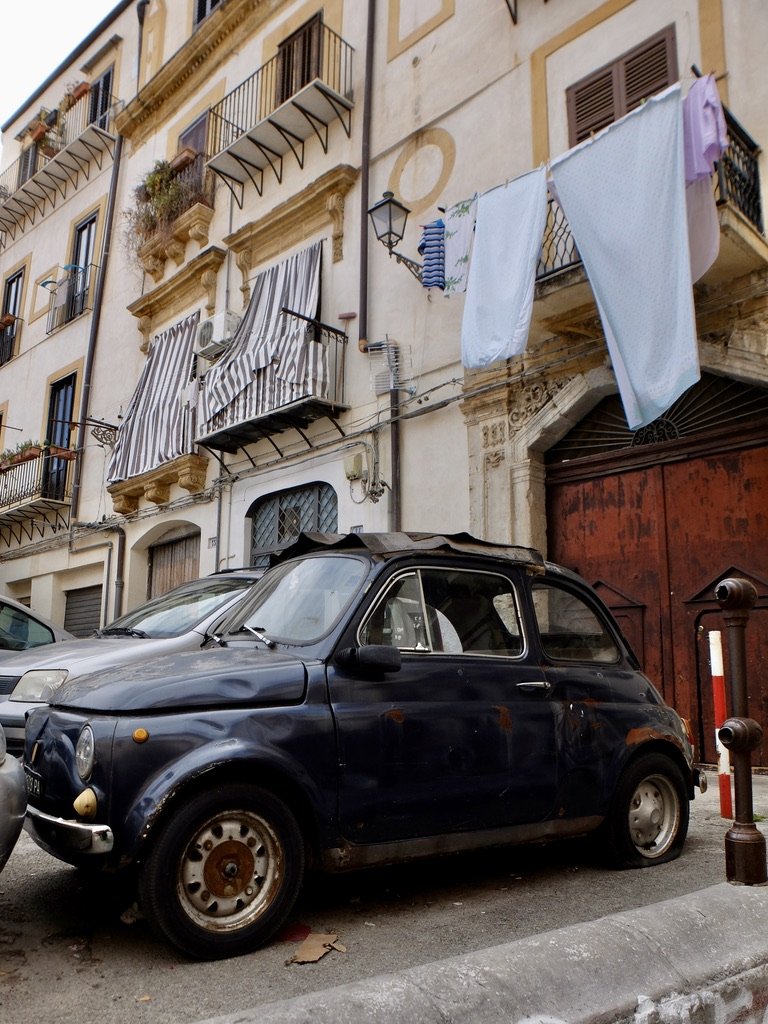
A sad vintage Fiat Cinquecento.
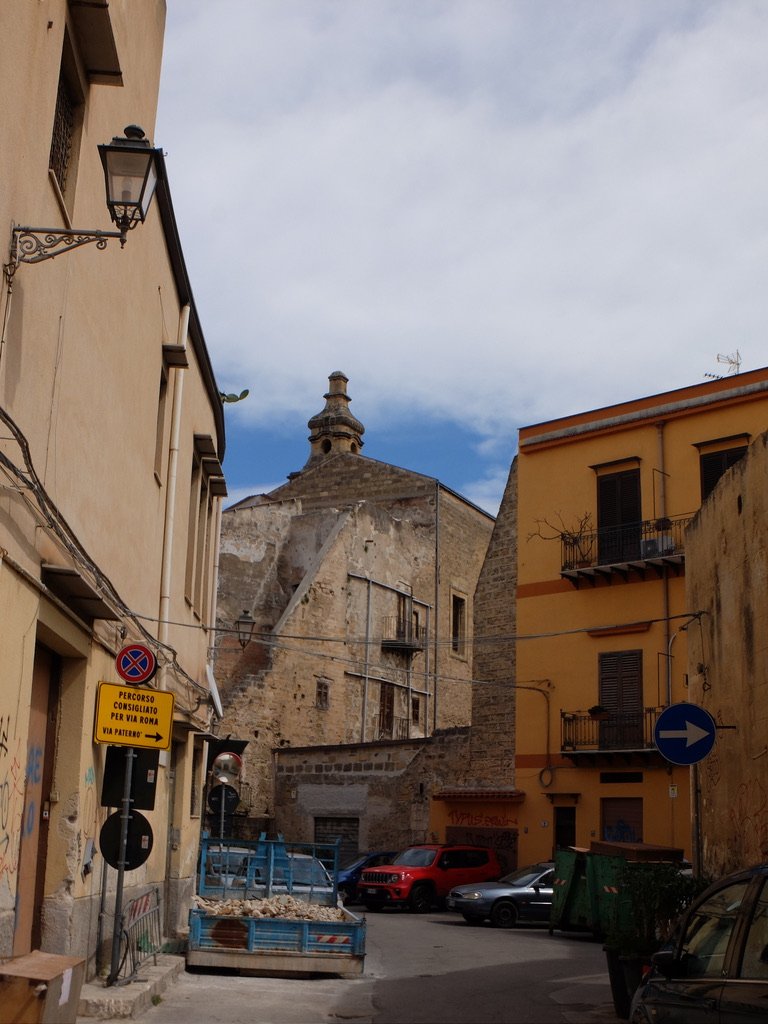
-
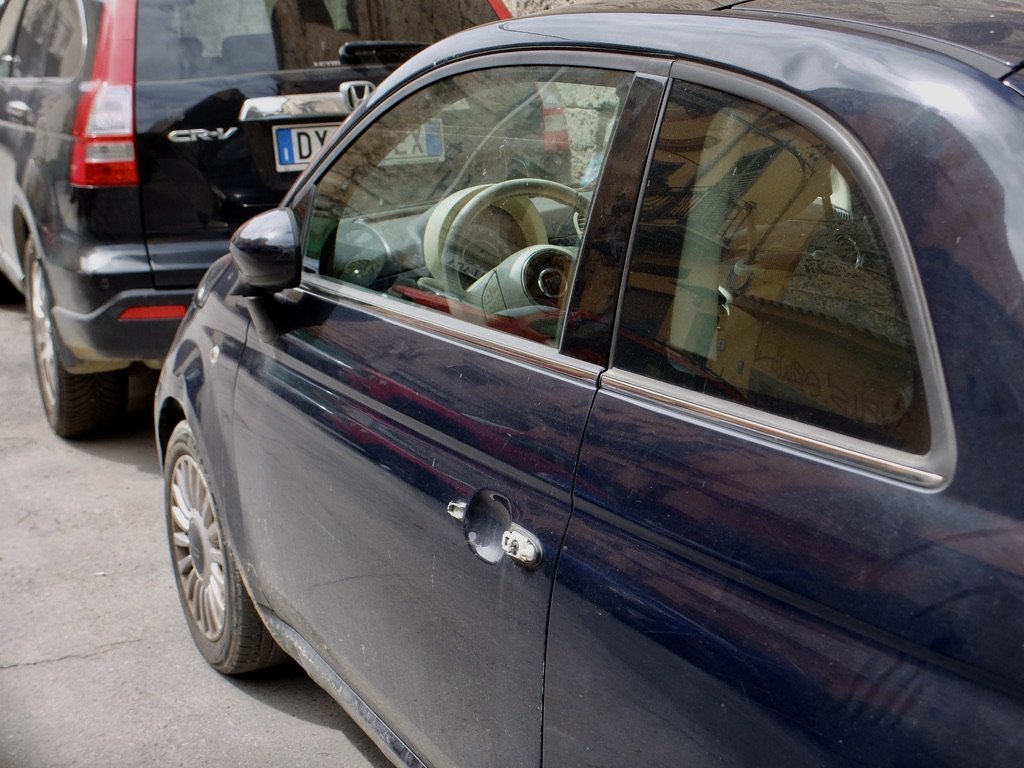
A few moments later we noticed how this might have happened…
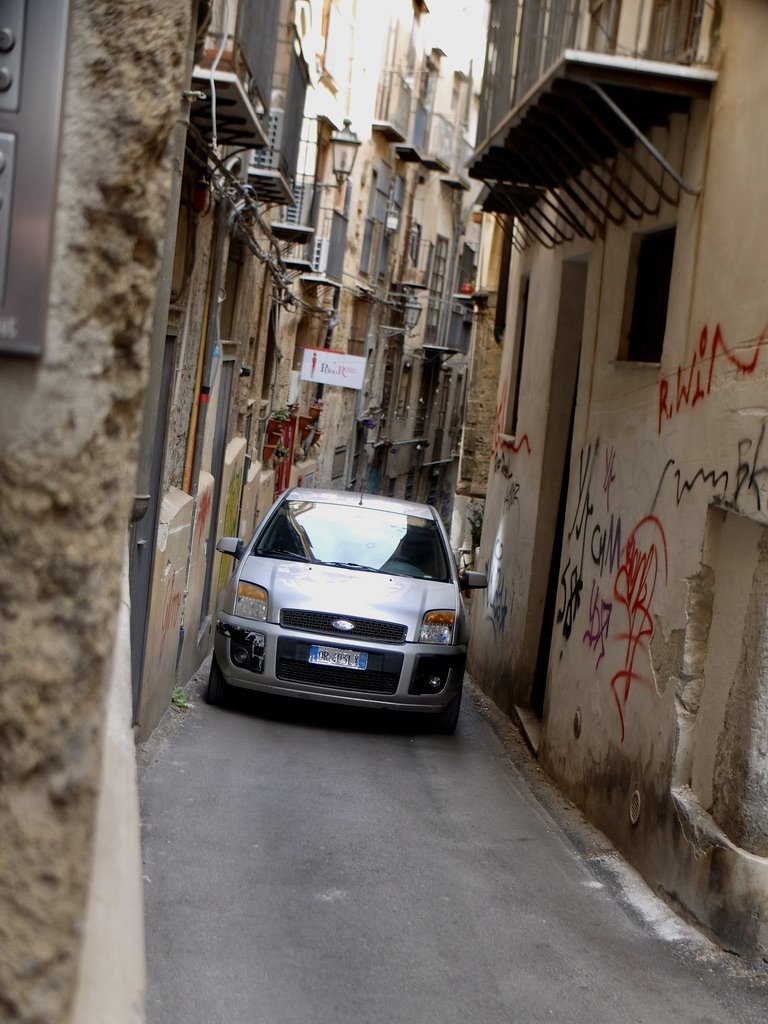
-
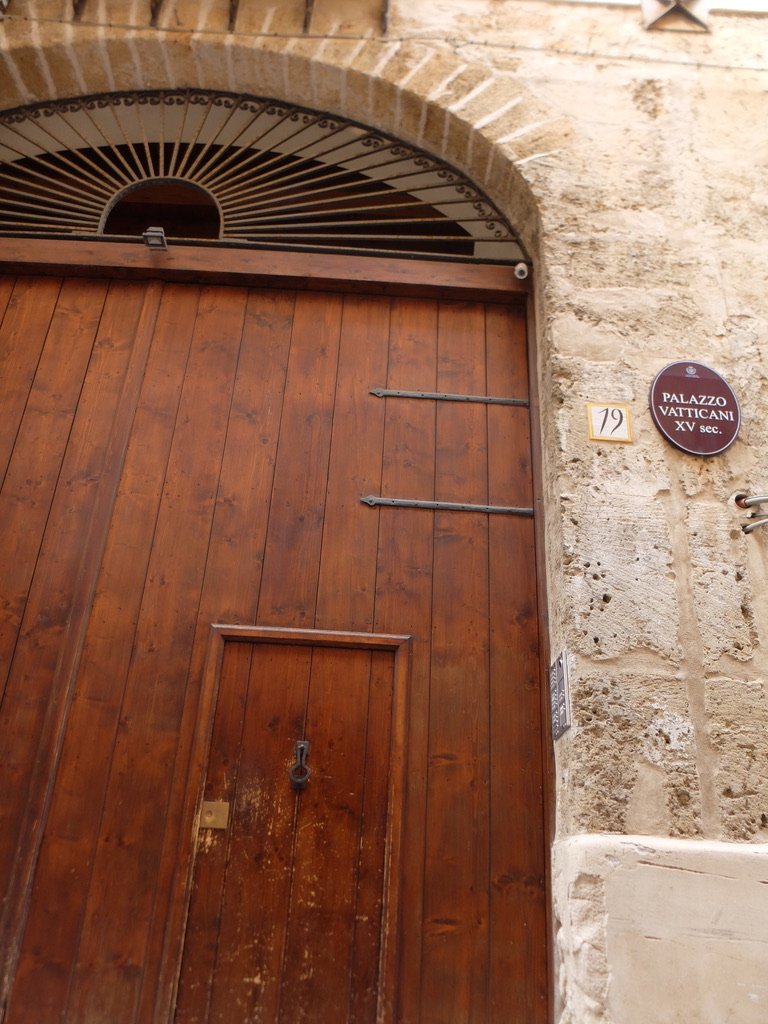
16 dwellings in this 14th century palazzo.
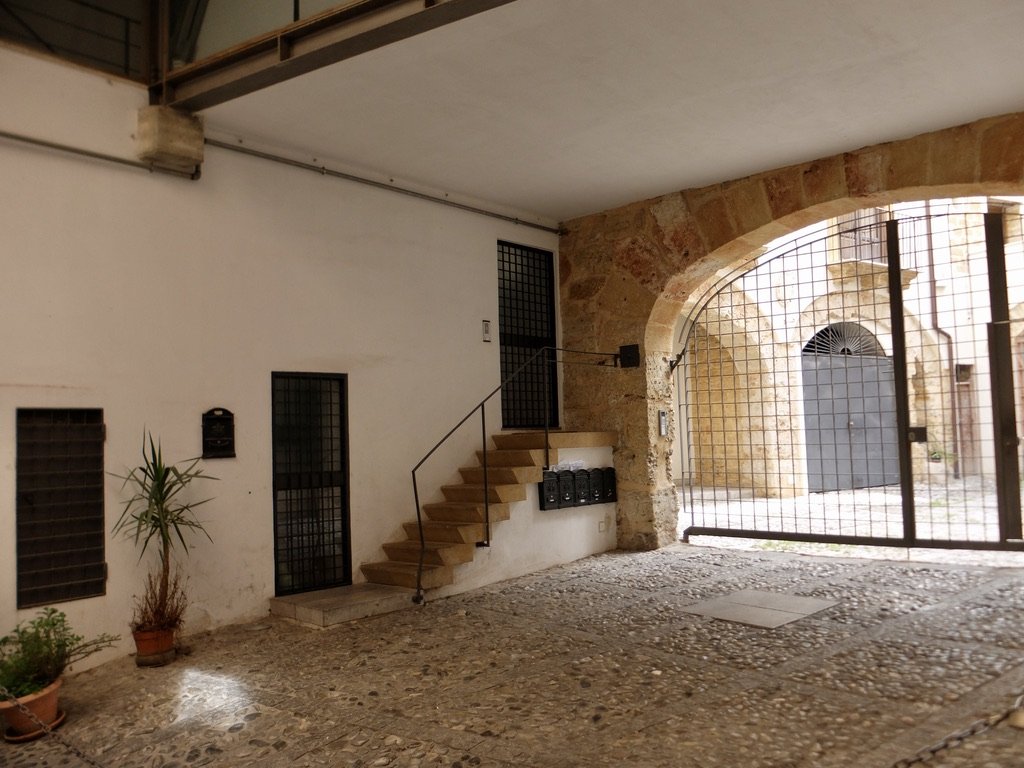
Only five in this one & off street parking!
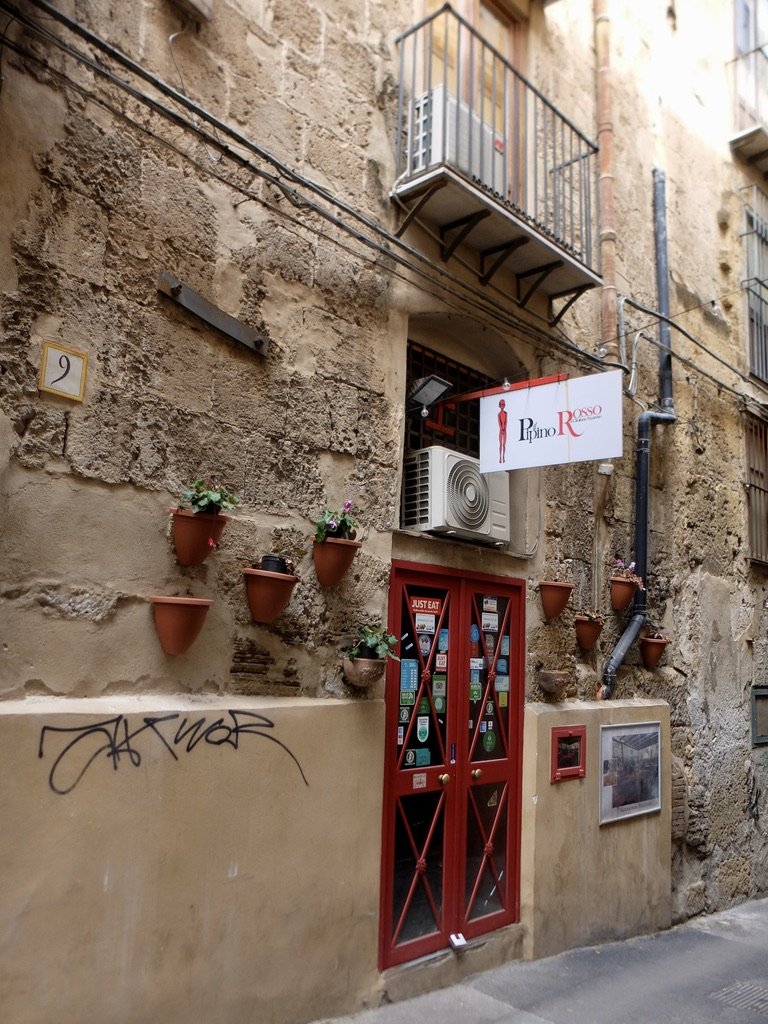
-
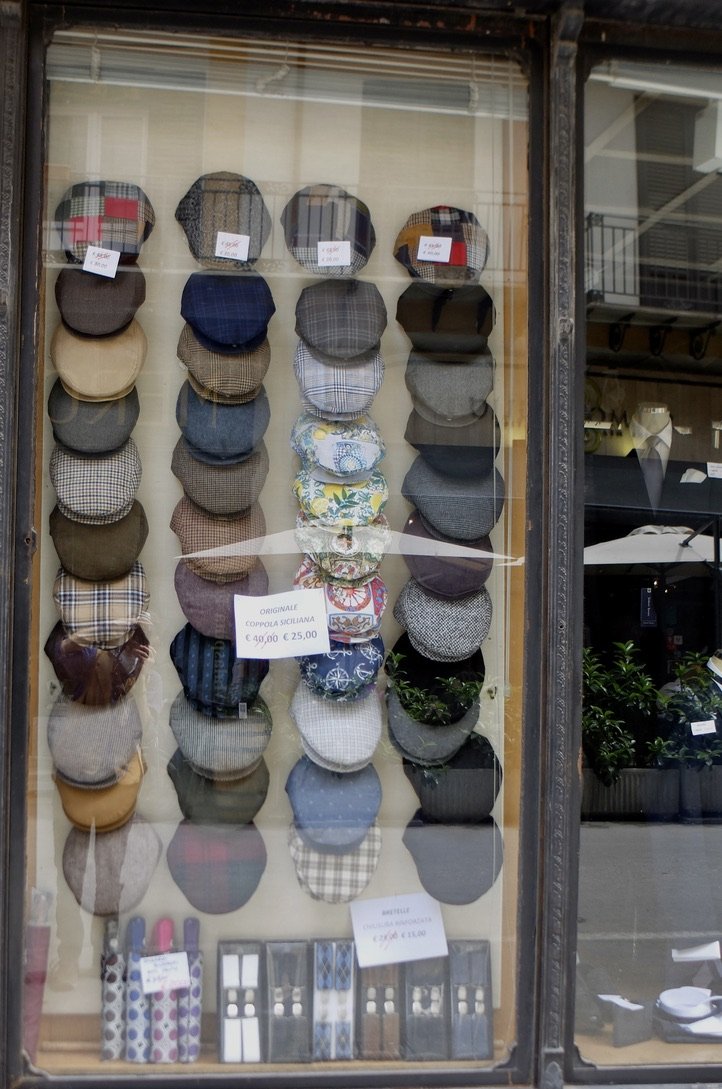
Men’s flat caps that were favored here & in France.
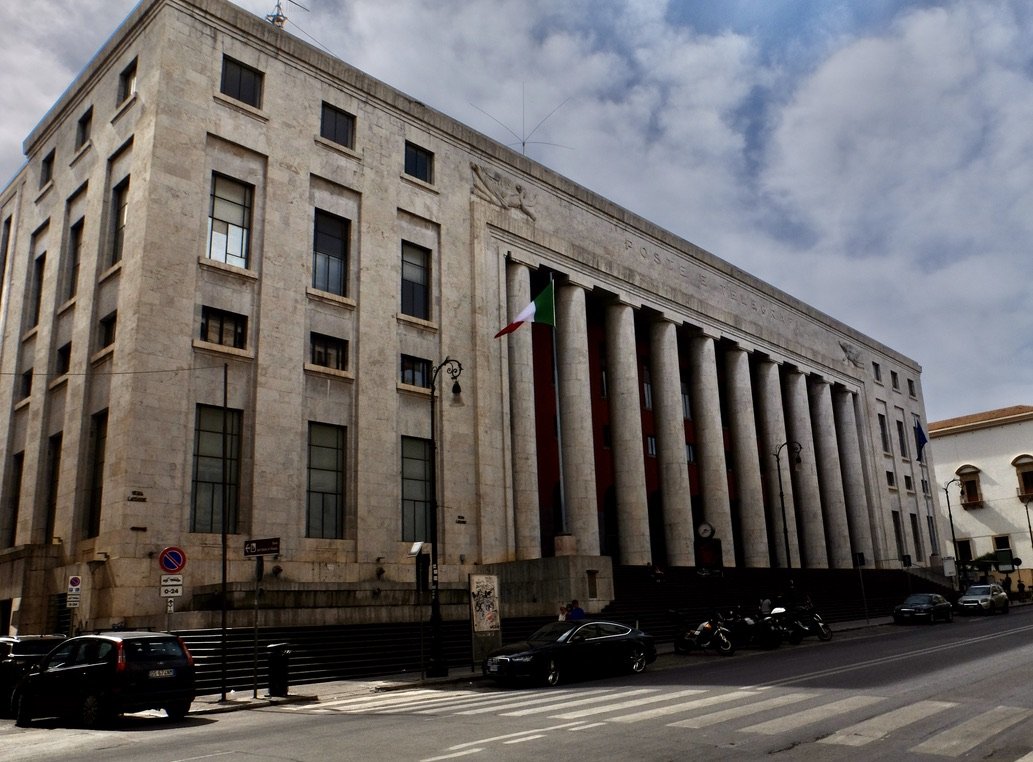
The central post office, Palazzo Postale, is an example of Fascist era architecture.
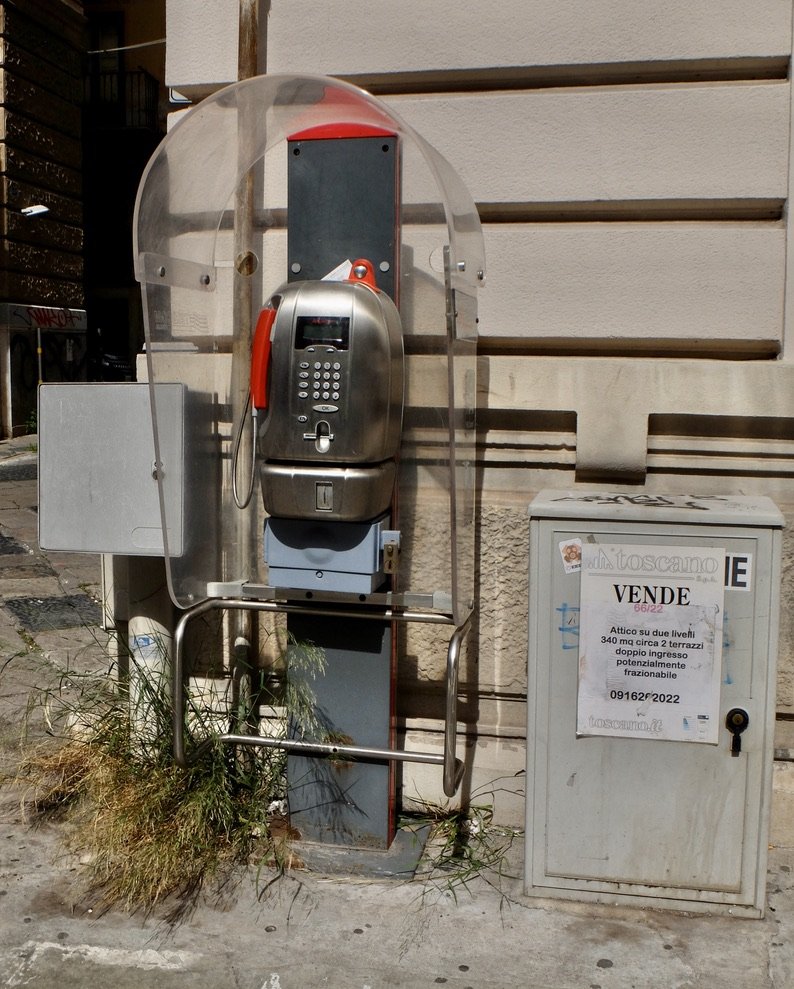
-
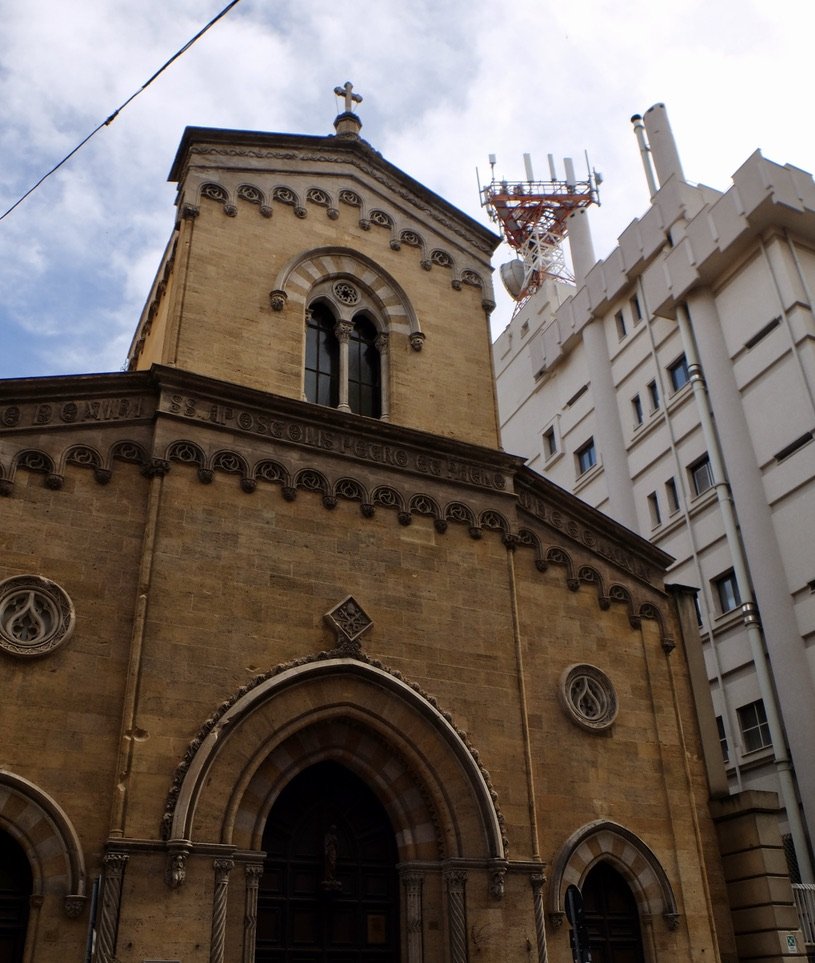
Norman & Arabic influences next to modern era.
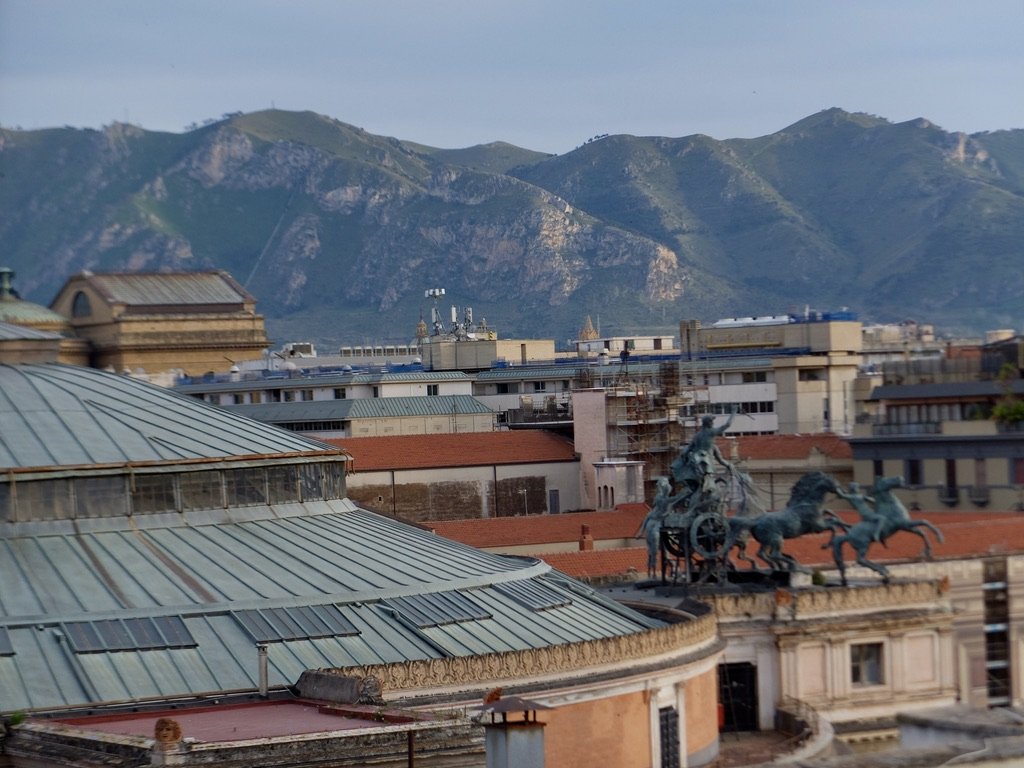
Teatro Politeama. View from Hotel Opera Plaza - Osservatorio.
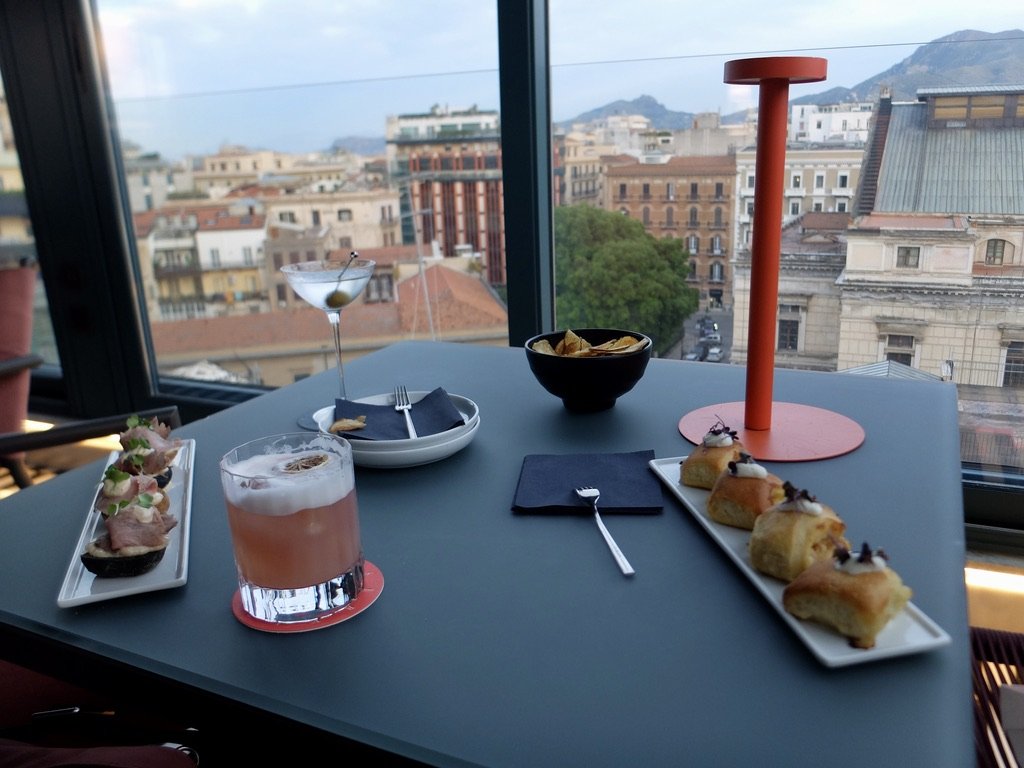
Dinner cena - Osservatorio Fine Restaurant & Mixology Rooftop - Hotel Opera Plaza.
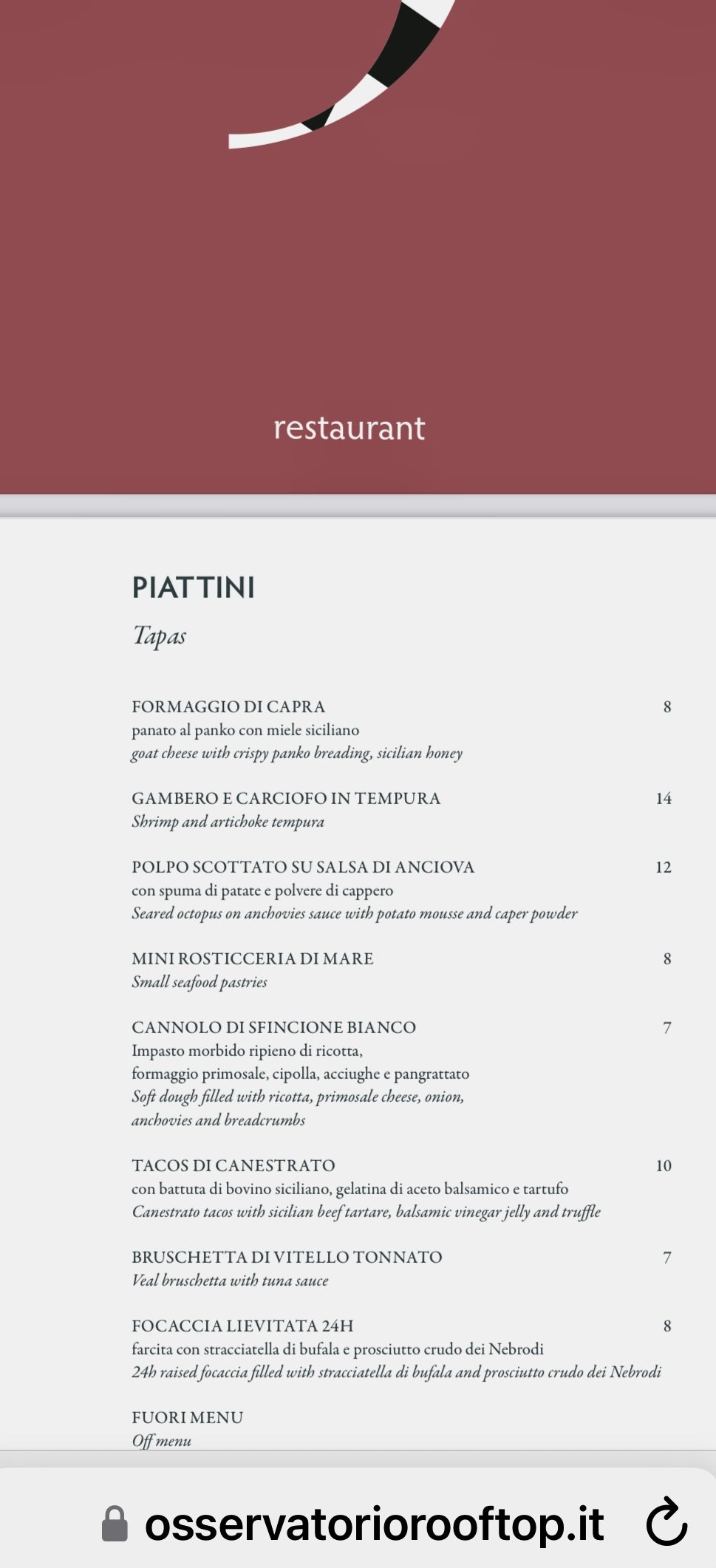
Dinner cena Osservatorio Fine Restaurant & Mixology Rooftop.
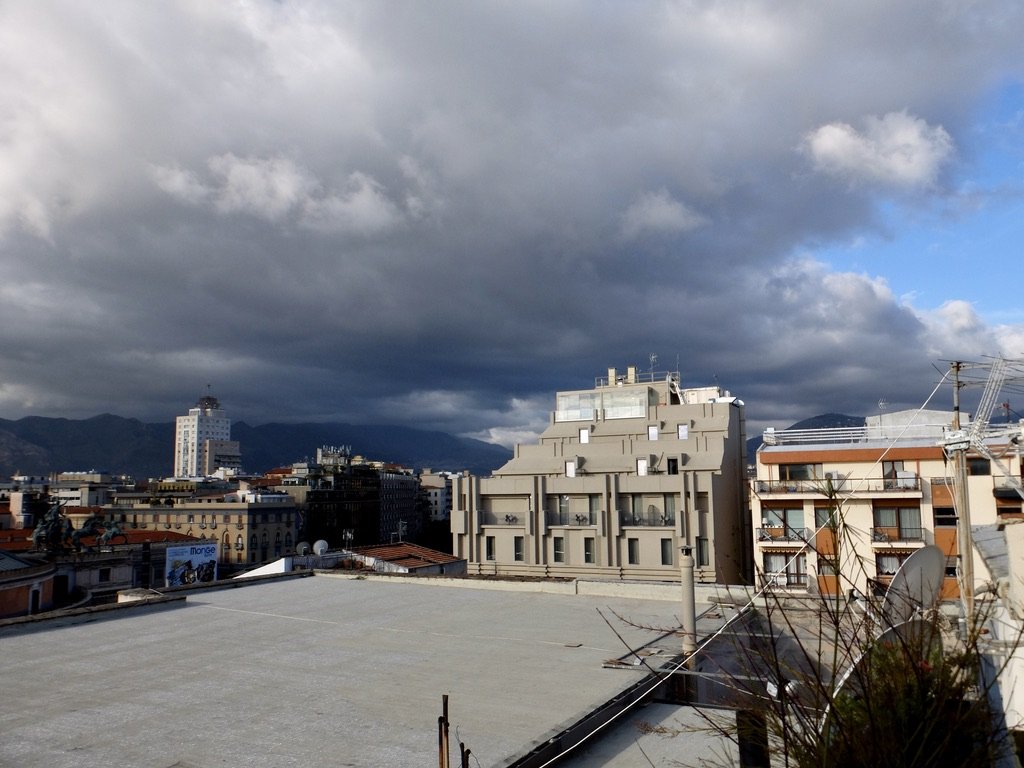
Morning view from Hotel Opera Plaza - Osservatorio Fine Restaurant & Mixology Rooftop.
From this & the next two photos one can see how Palermo is on a plain.
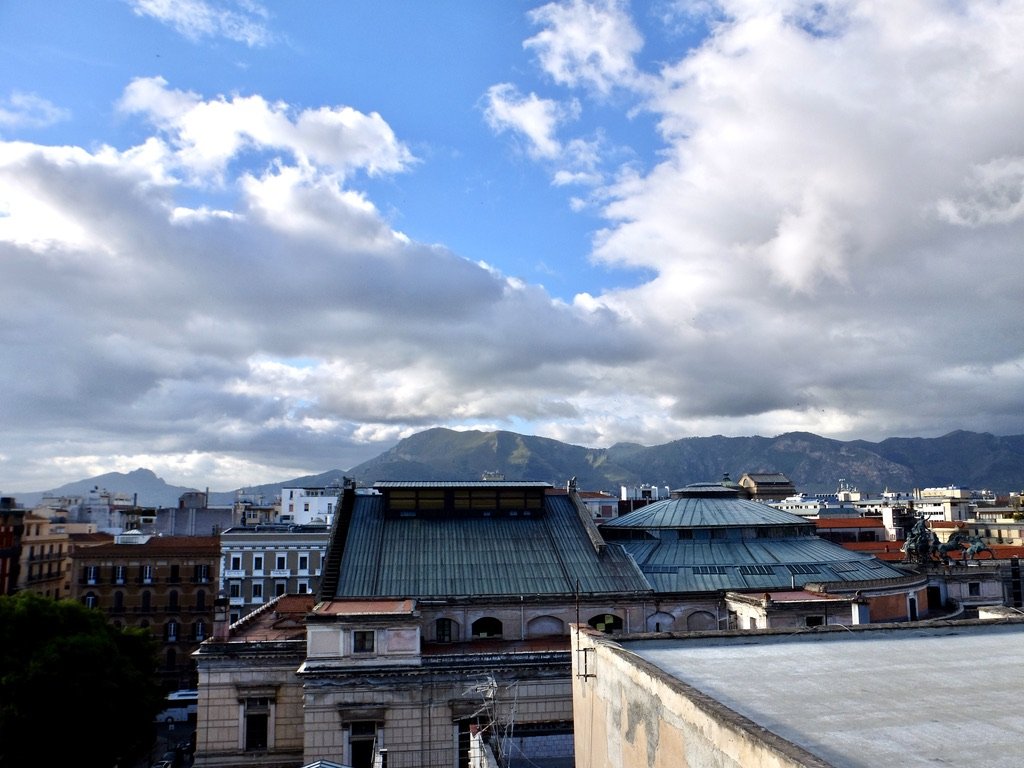
Morning view from Hotel Opera Plaza - Osservatorio Fine Restaurant & Mixology Rooftop.
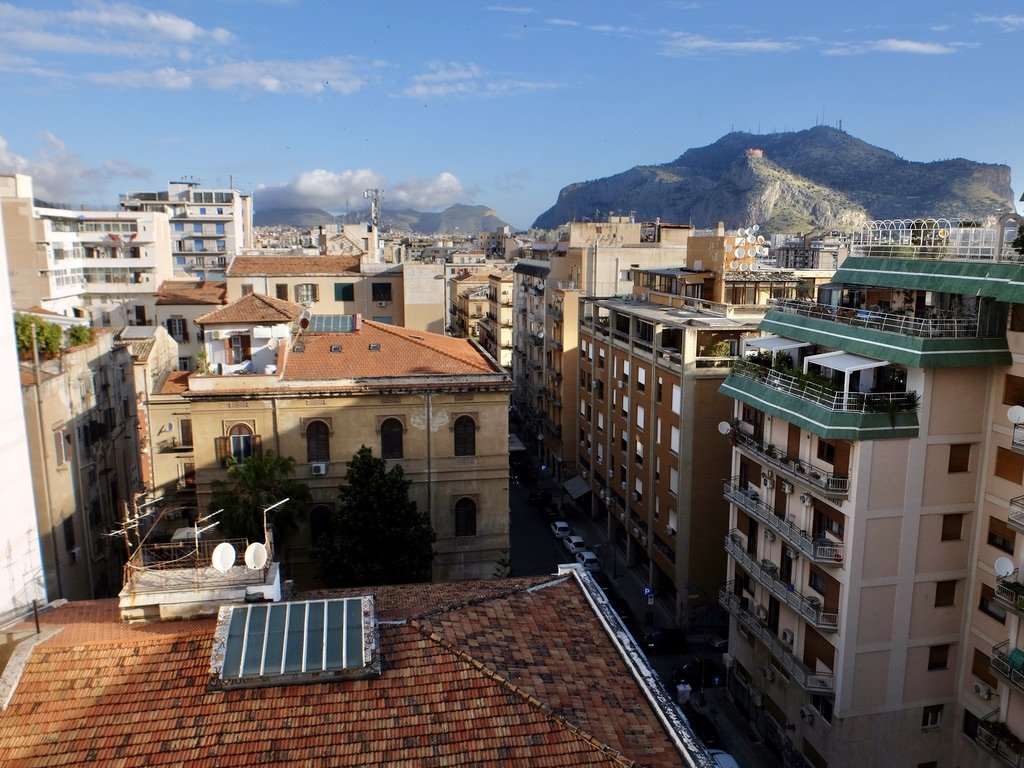
Morning view from Hotel Opera Plaza - Osservatorio Fine Restaurant & Mixology Rooftop.p.
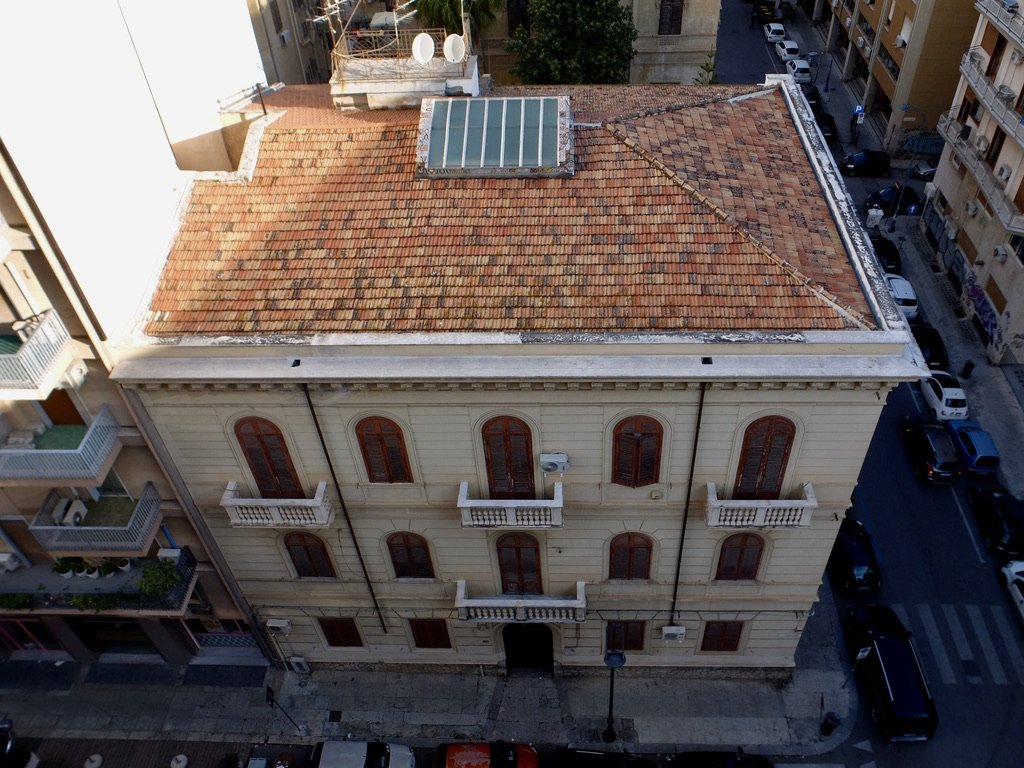
Morning view from Hotel Opera Plaza - Osservatorio Fine Restaurant & Mixology Rooftop.
We kept forgetting to ask the history of this palazzo.
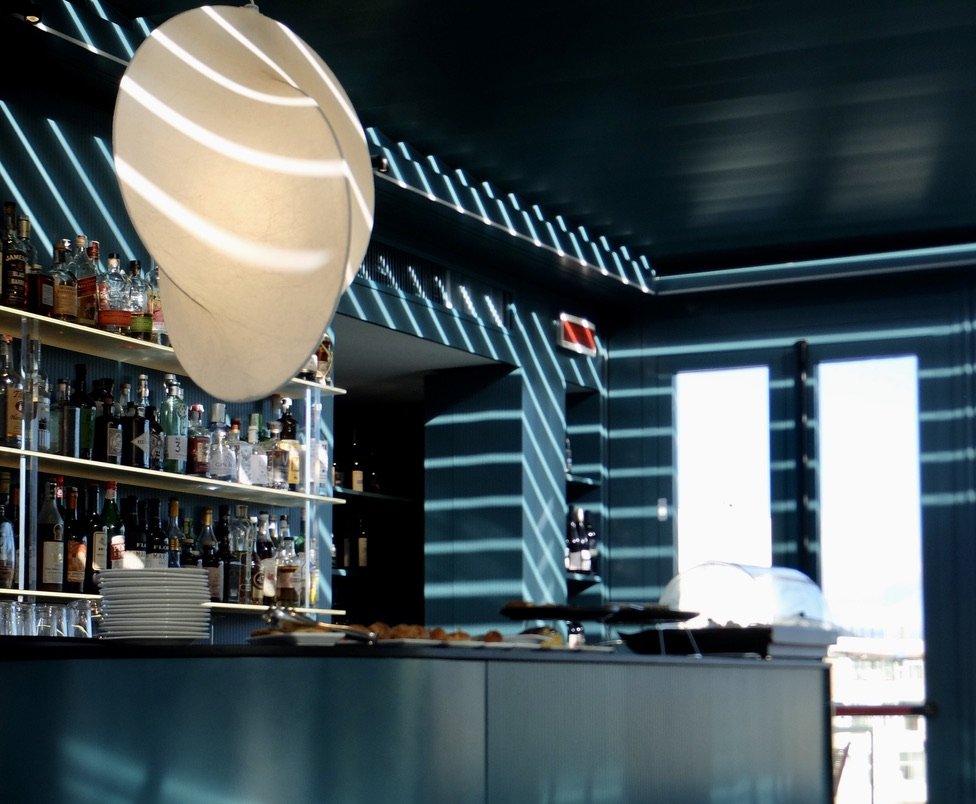
Breakfast colazione Hotel Opera Plaza - Osservatorio.
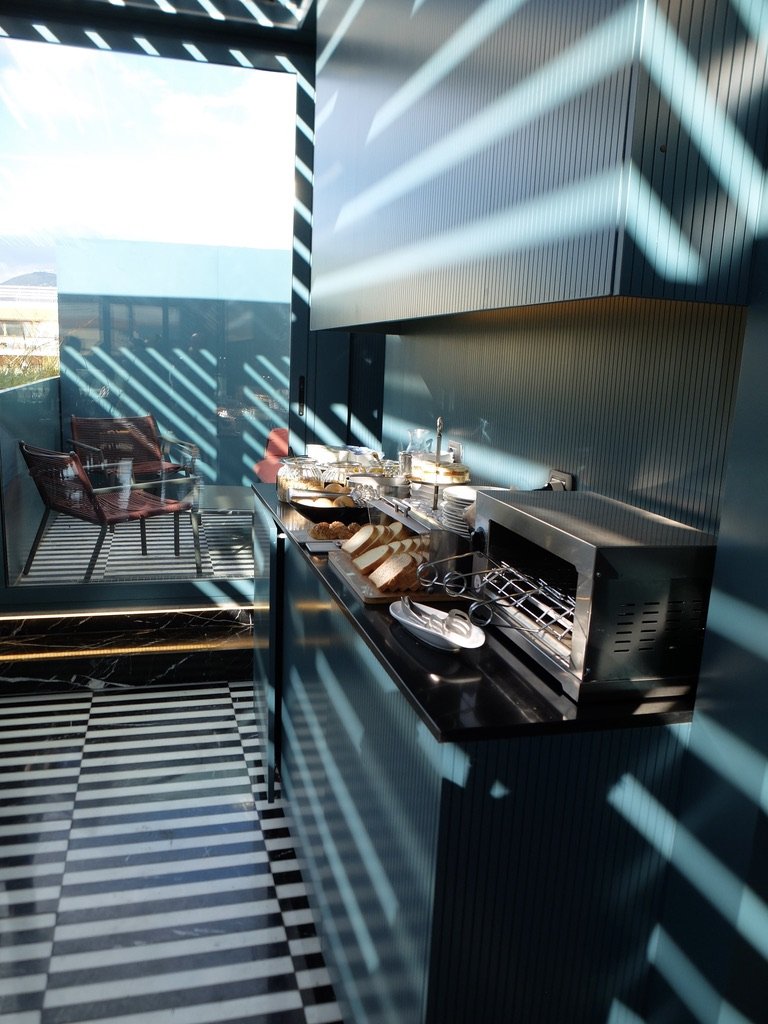
Breakfast colazione Hotel Opera Plaza - Osservatorio.
Note the nifty toaster to the right.
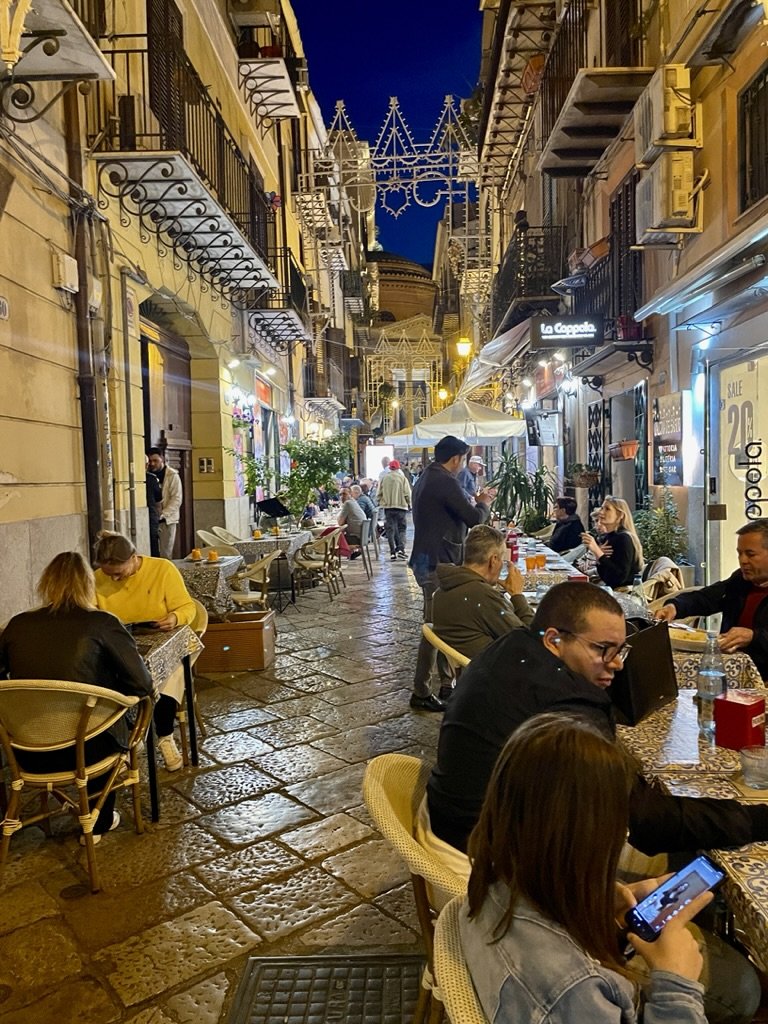
The lights over this alley way are lit once a year for a special holiday.
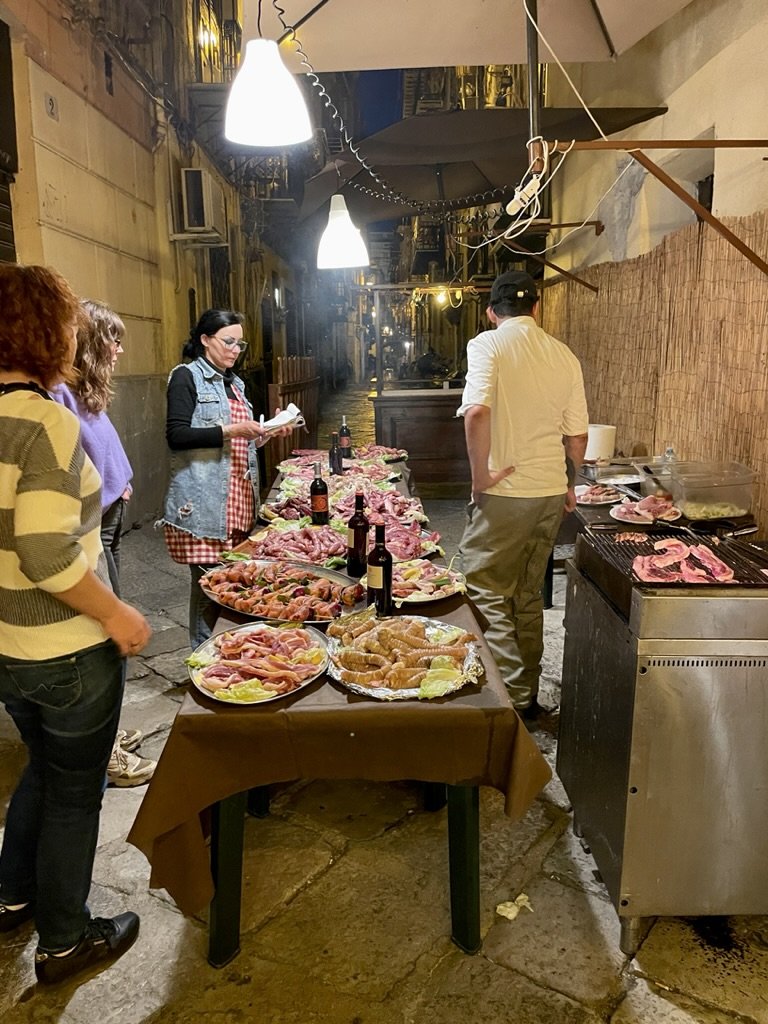
-
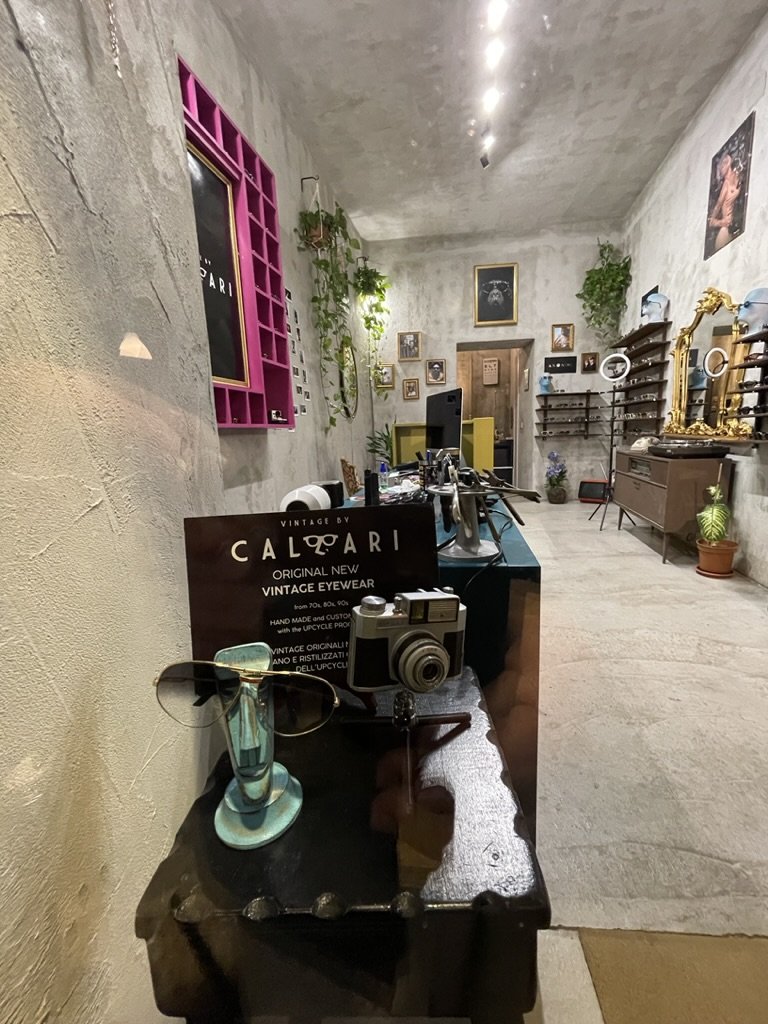
-
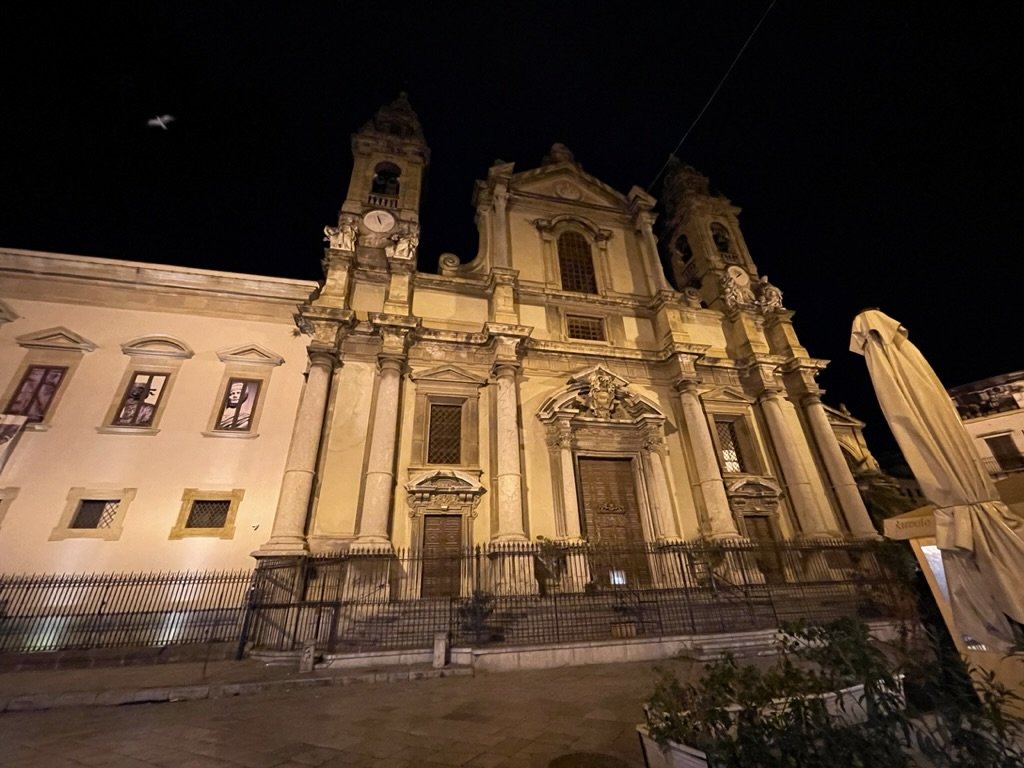
-

-
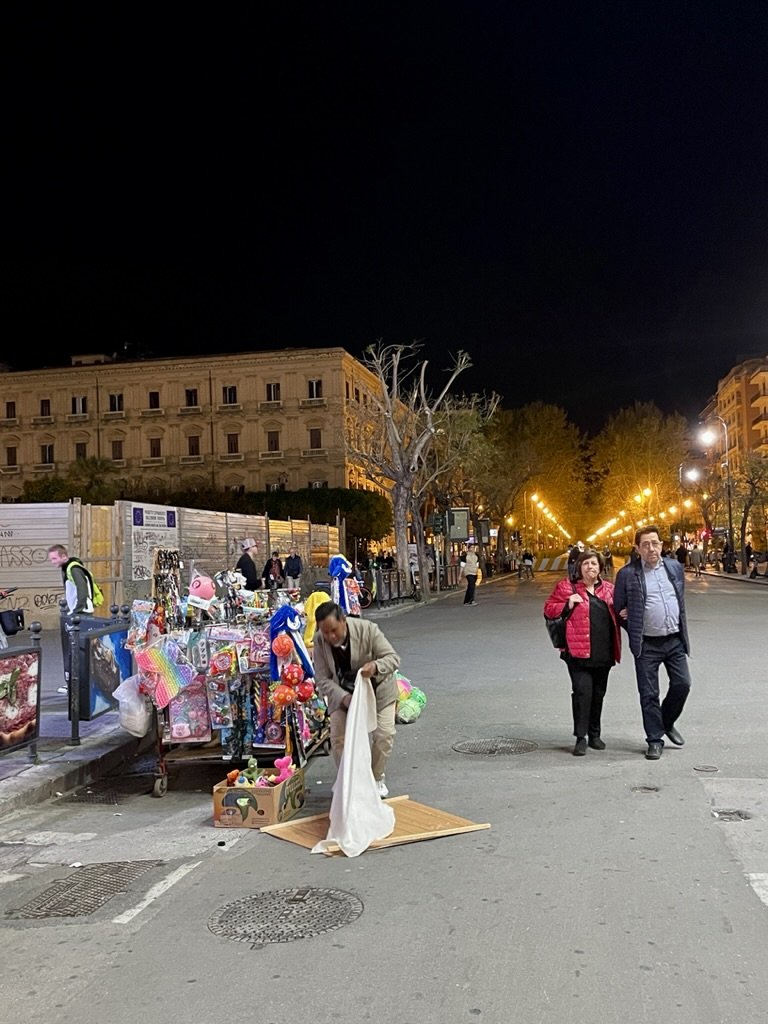
The end of this day's passeggieta.
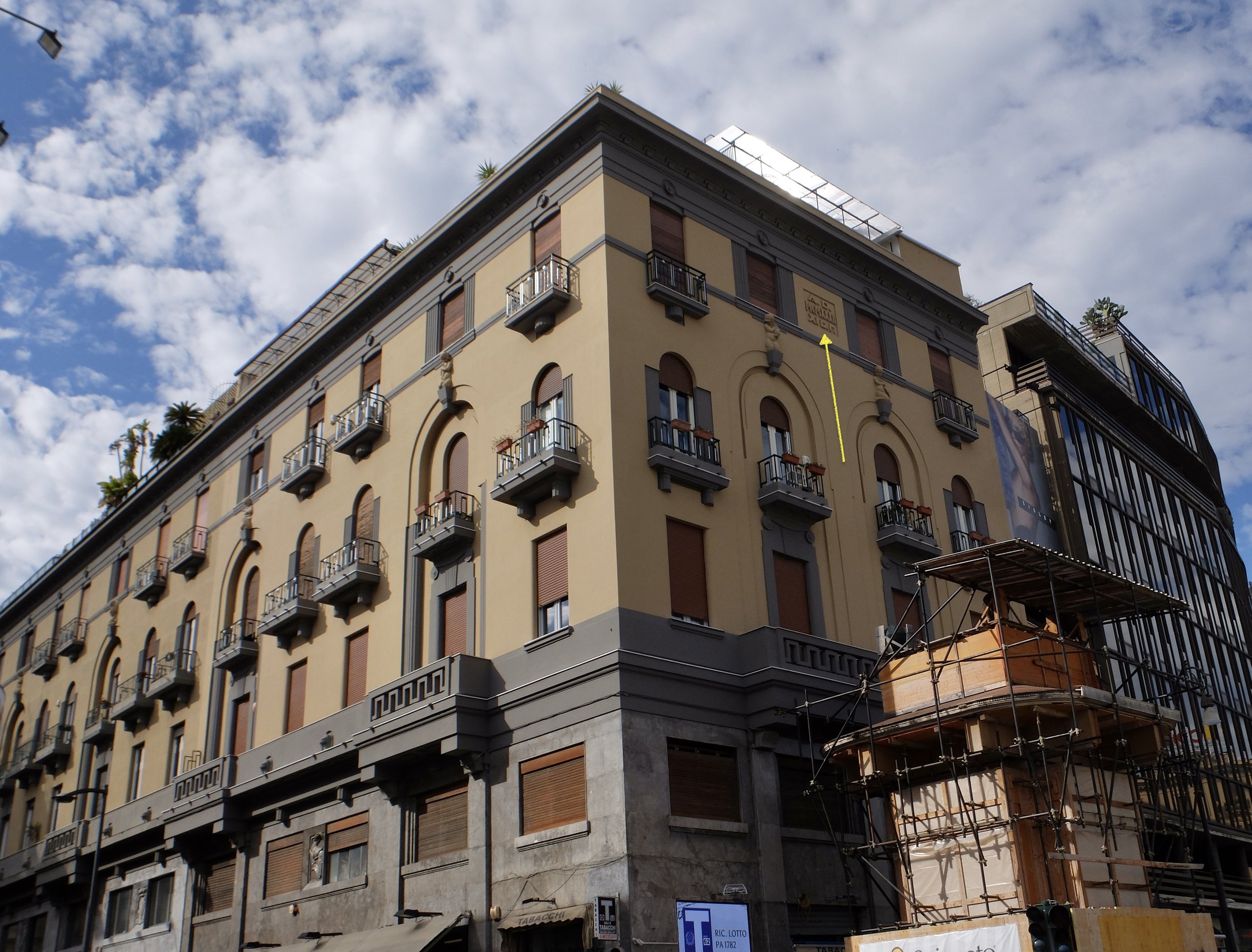
When this building was recently remodeled, the 1932 inscription from the Fascist time was revealed. They kept it anyway.

Lots of people getting around on bicycles.
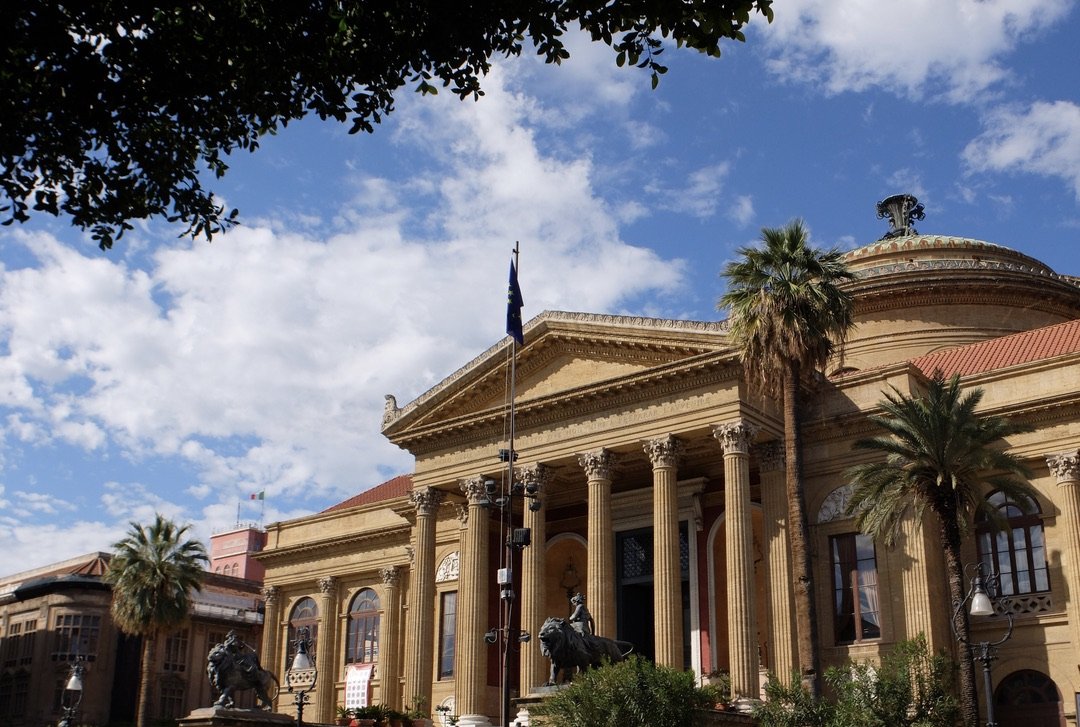
Teatro Massimo Vittorio Emanuele c. 1897 is an opera house & opera company located on the Piazza Verdi.
The teatro was closed during the years that the Mafia controlled Palermo. It was reopened during the tenure of Mayor Leoluca Orlando. Mayor Orlando created pedestrian streets & made the city safe once again.
“Nowhere does the opera symbolize its city like the Teatro Massimo… it’s a symbol of the end of the domination of the Mafia.”
Mayor Orlando was termed out & recently replaced by a mayor who was elected with the backing of two mafioso who just finished their 12 year jail sentences.
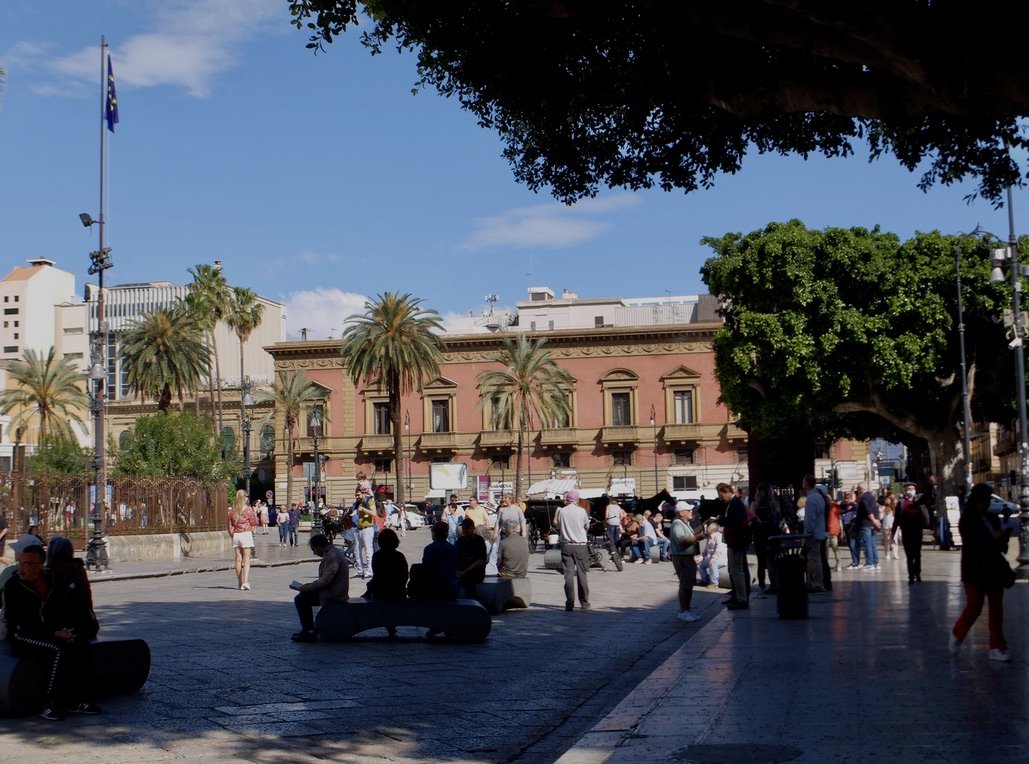
Piazza Verdi with the opera house on the left. The palazzo ahead, once marked the outskirts of Palermo. Prior to the era of Mayor Orlando, children were told not cross over to this side as they could get robbed or knifed.
For more detailed info. see the NT Times article:https://www.nytimes.com/2018/03/12/world/europe/palermo-opera-teatro-massimo.html
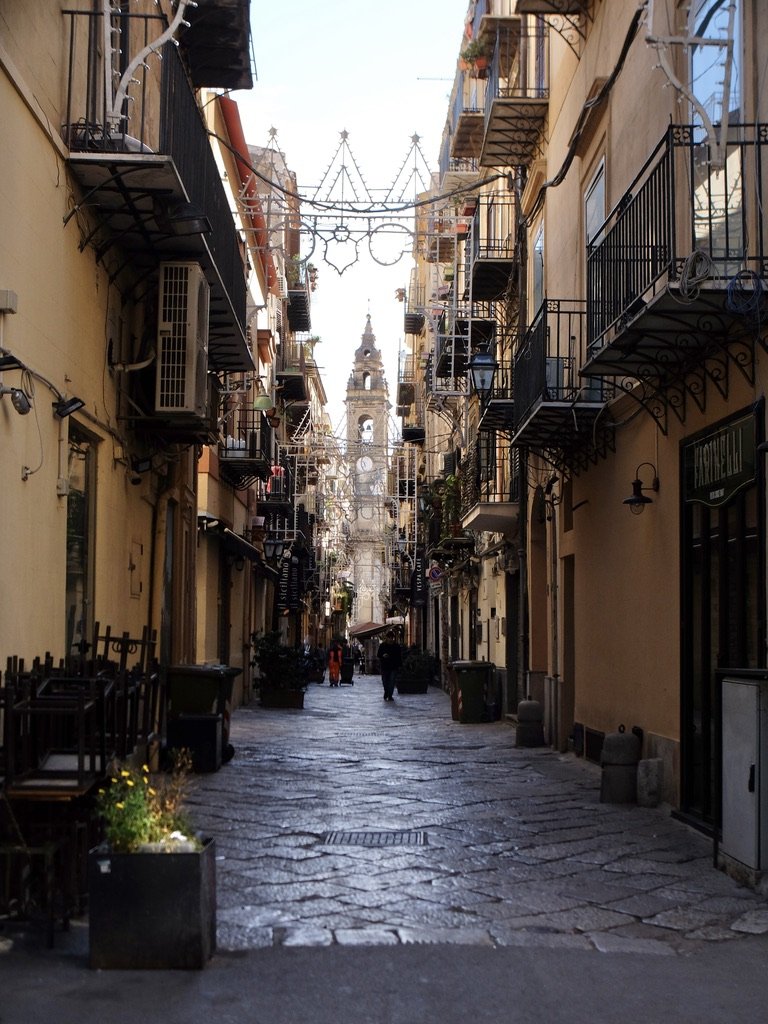
-
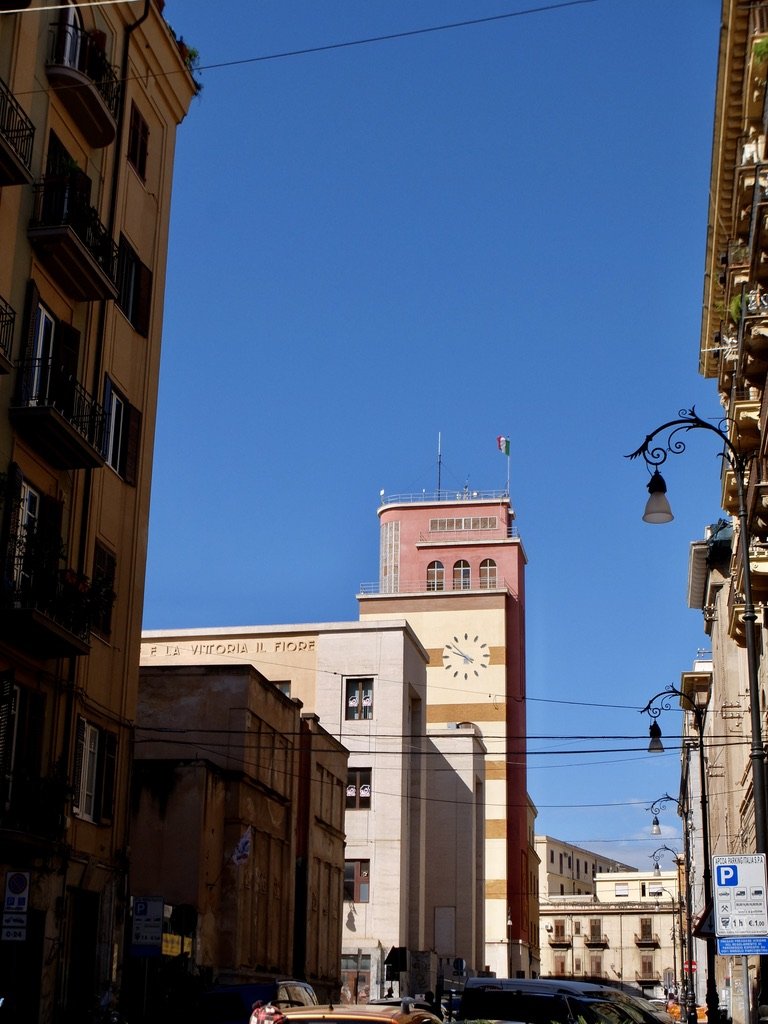
The red building is the fire department.
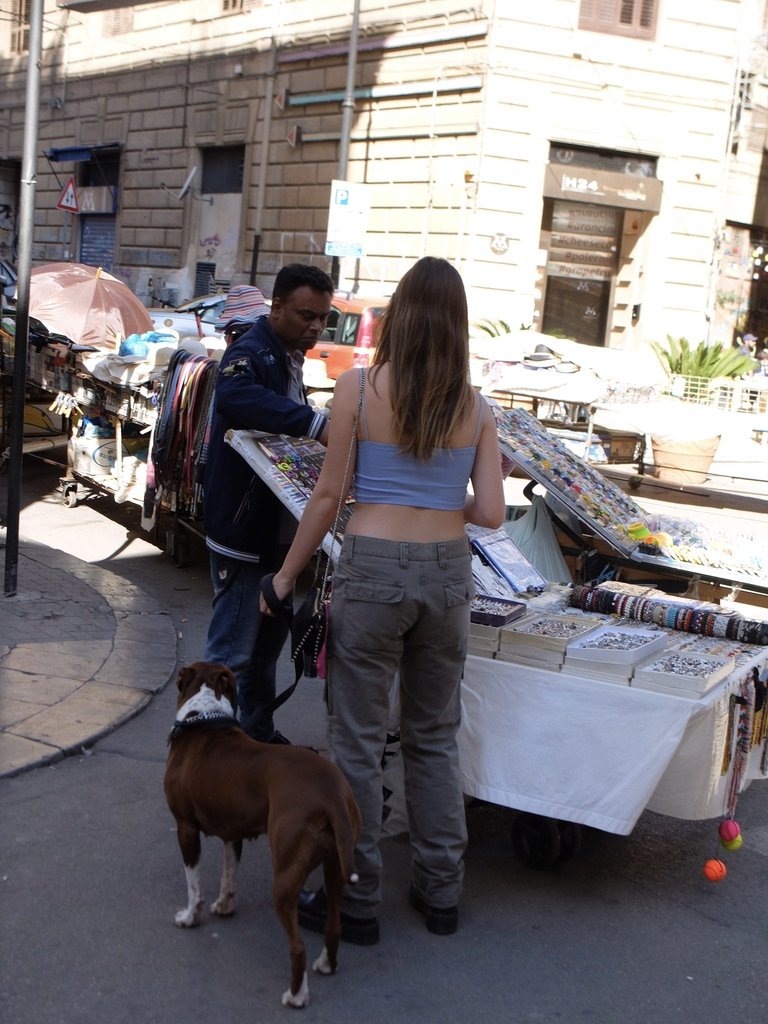
Even the locals shopped at the street vendors.
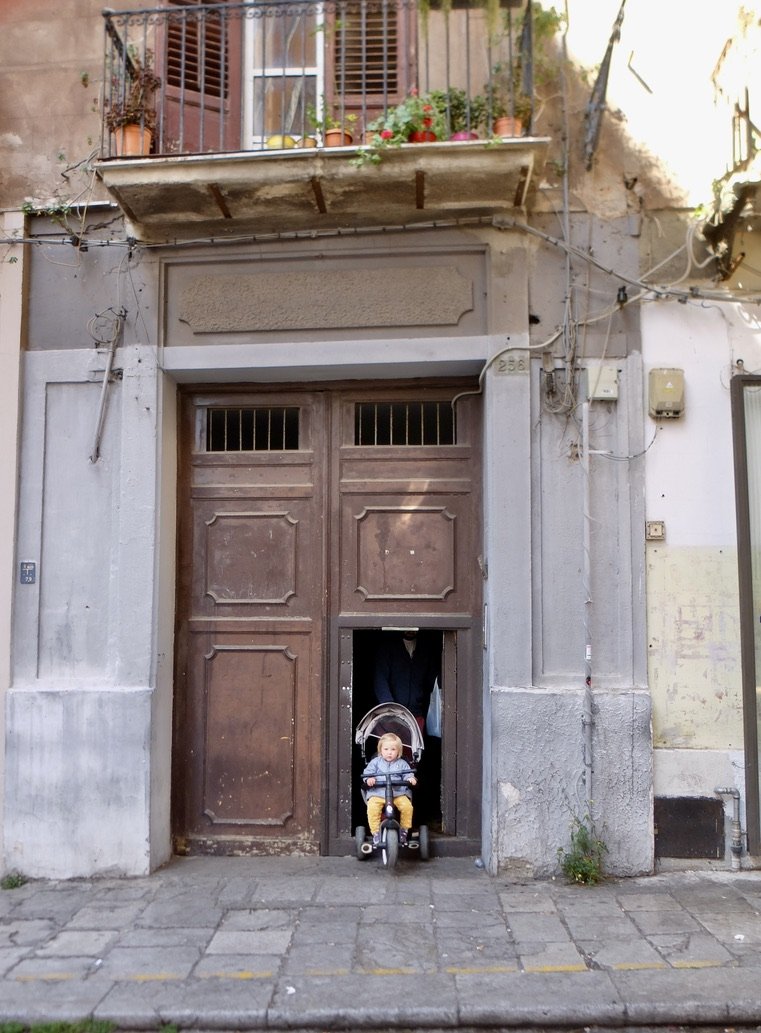
-
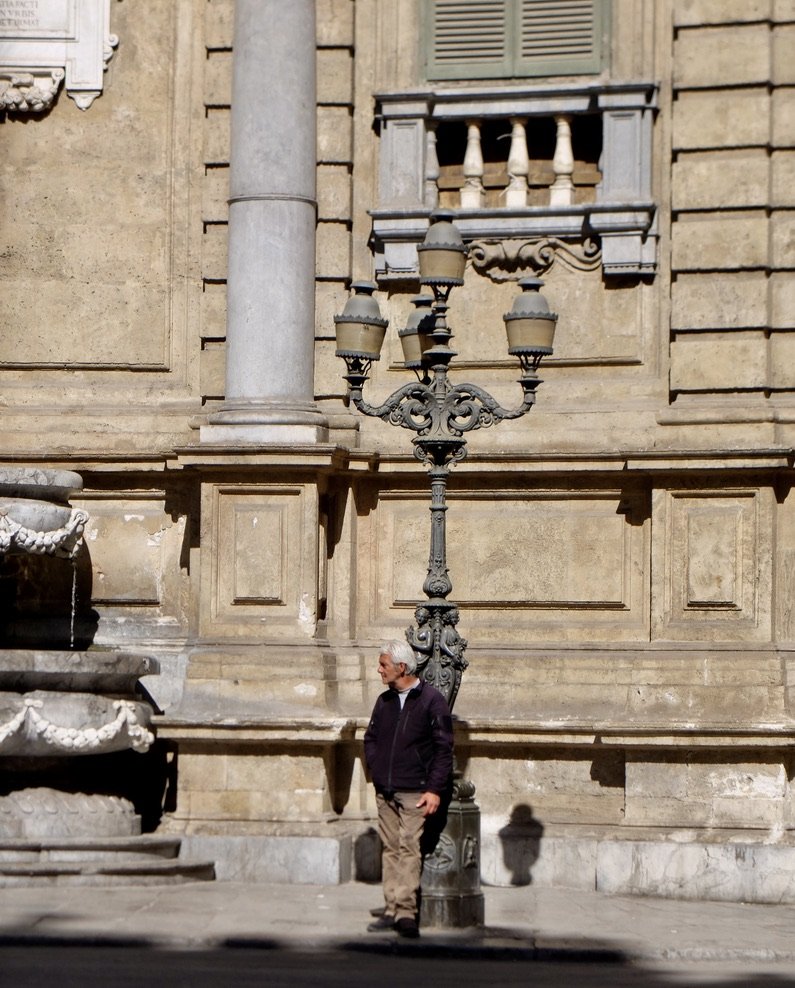
I Quattro Canti — The Four Corners of Palermo, now with the sun shining.
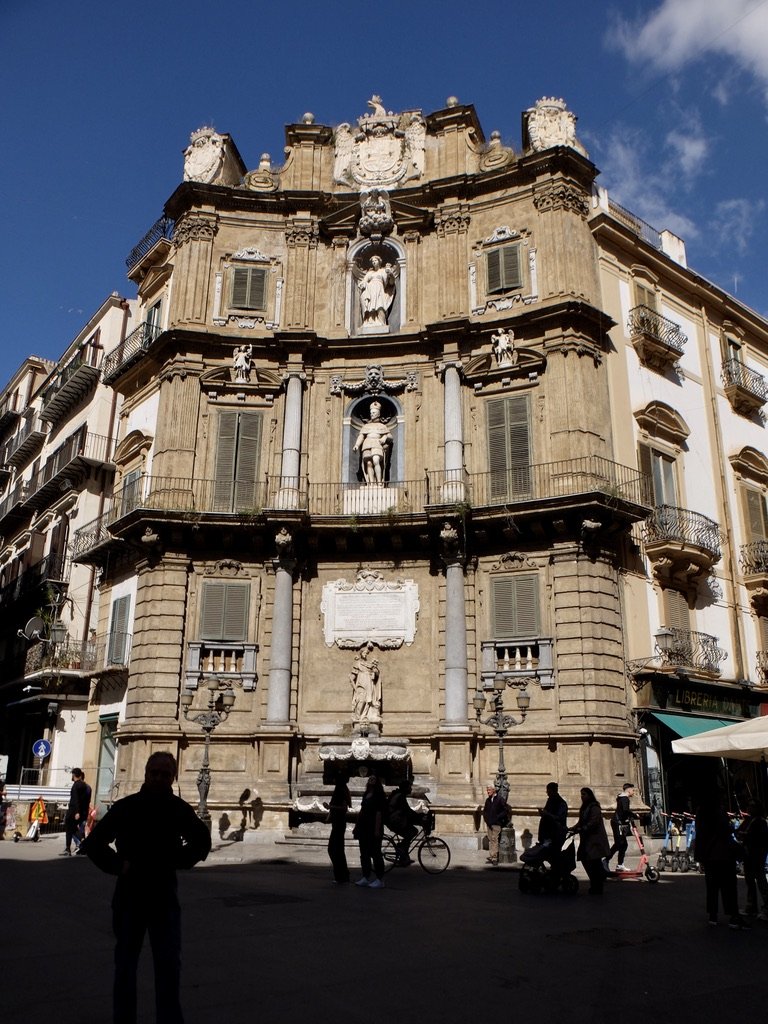
I Quattro Canti — The Four Corners of Palermo.
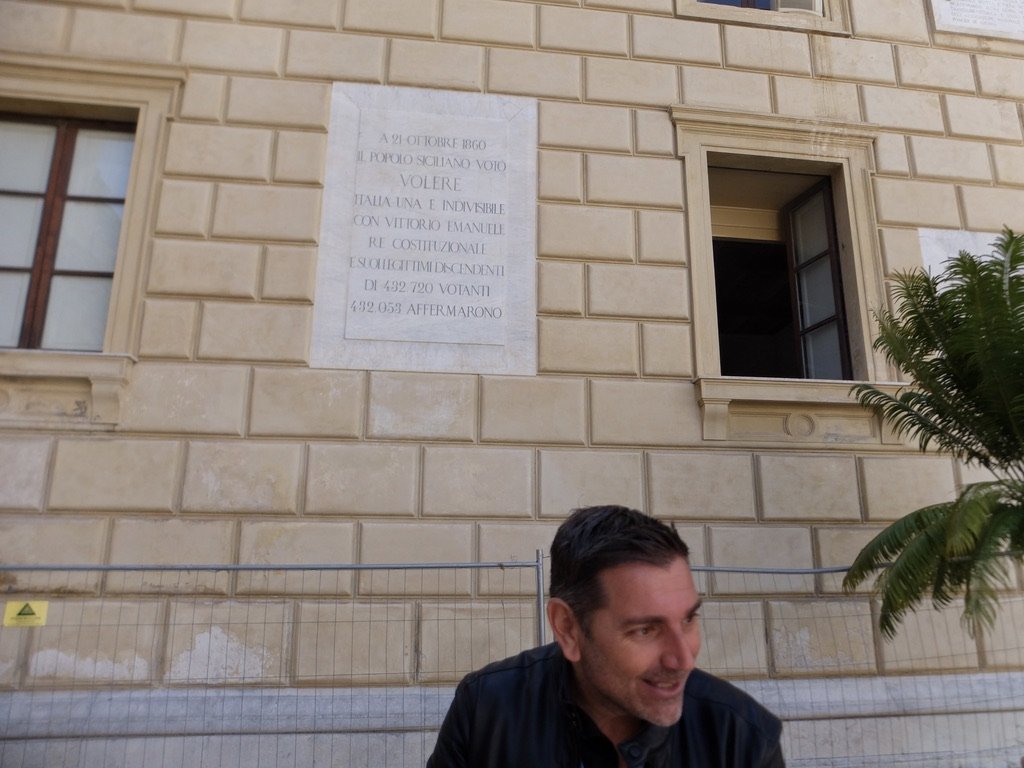
Gaetano discussed this, post Garibaldi, plaque
“OCTOBER 21 1860
THE SICILIAN PEOPLE VOTE
WANT
ITALY ONE AND INDIVISIBLE…”
Not everyone was happy with the outcome of the vote that might have been such a landslide. Supposedly out of 432,720 voters, 432,053 voted for the unification.
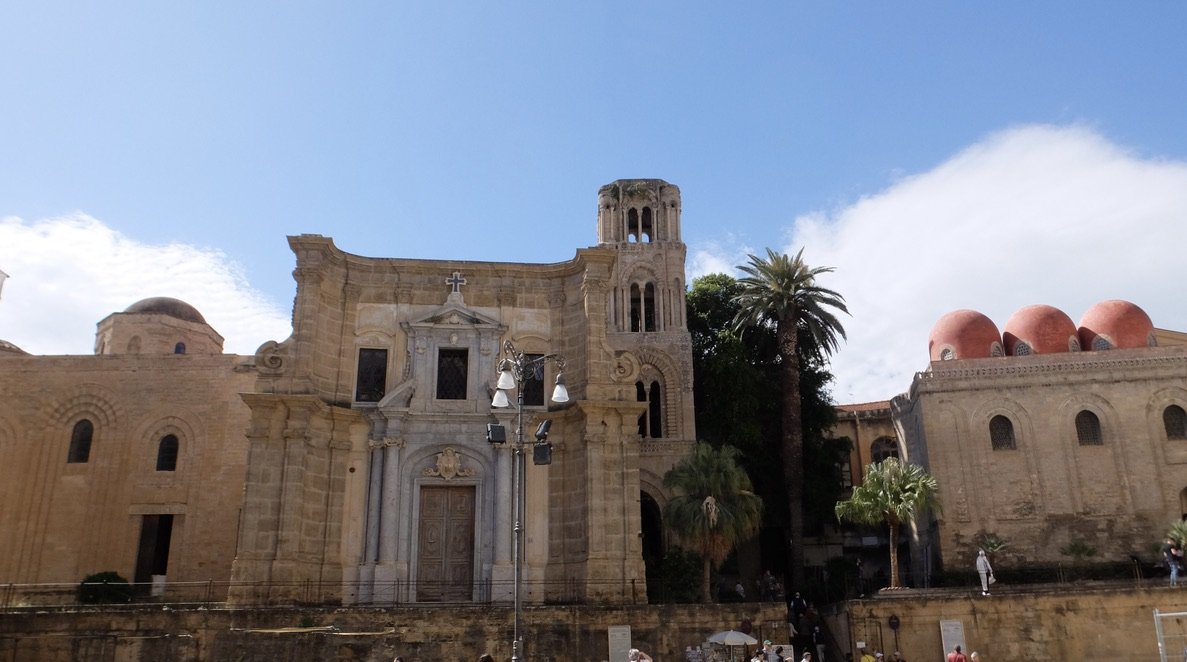
Like everywhere else in Palermo & Sicily in general, this piazza displays a melding of many types of architecture due to the many invaders, some of who stayed around for a long time.
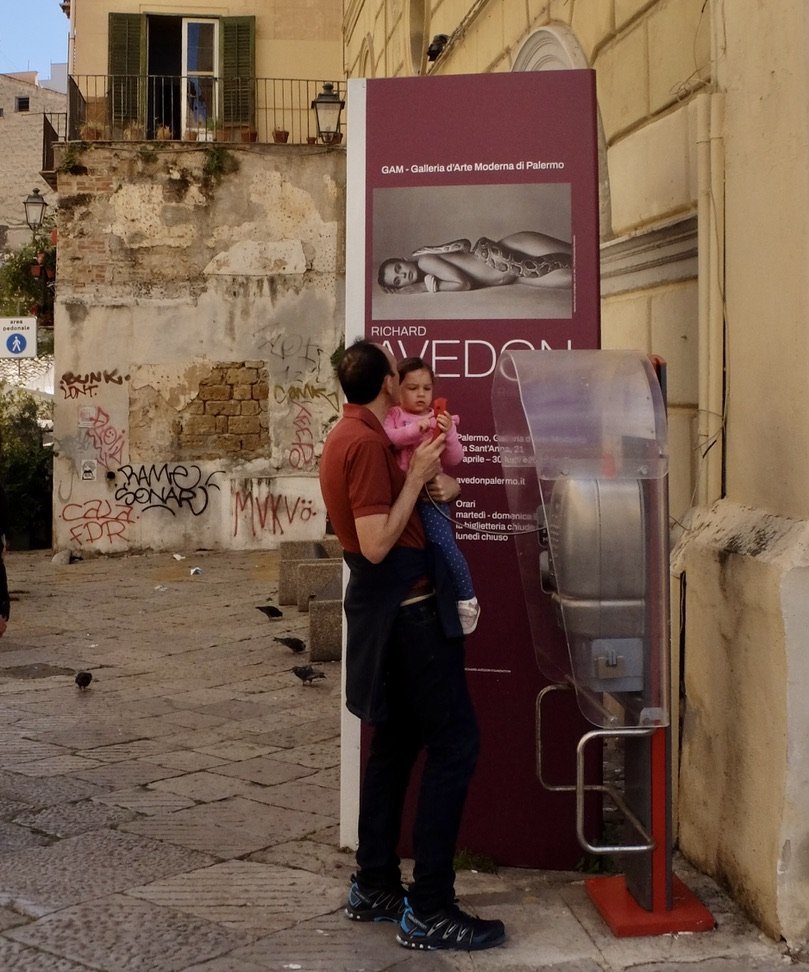
-
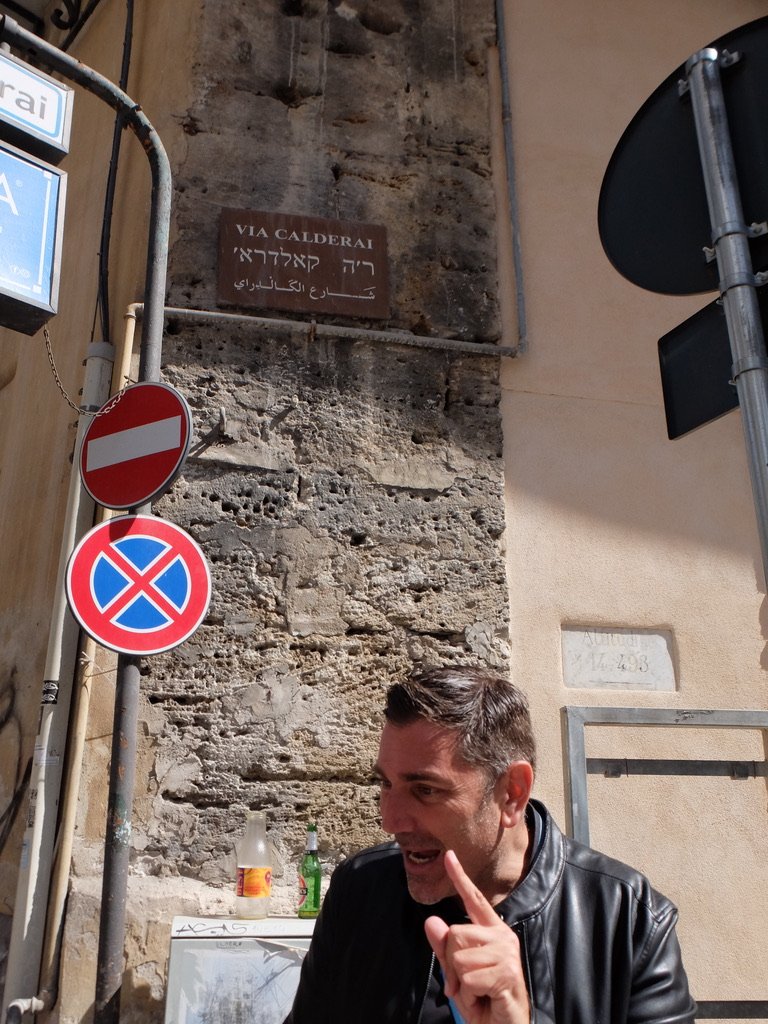
When Gaetano discovered that we were Jewish, he took us out of the way to the former Jewish section.
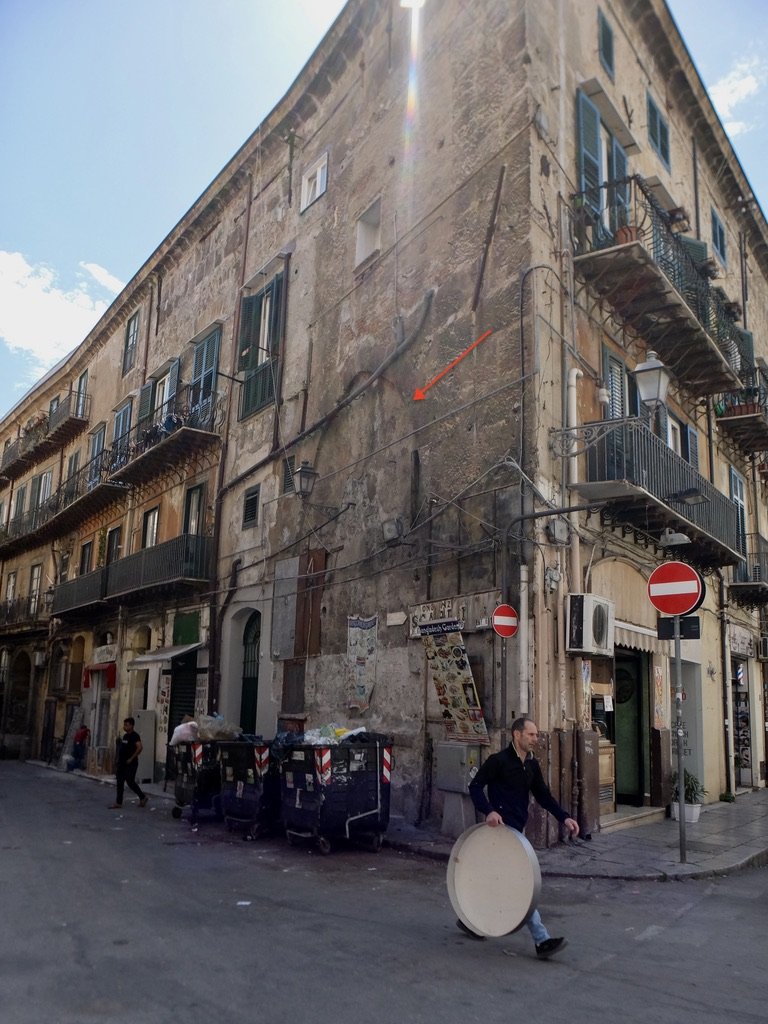
That arch was likely the remnants of synagogue.
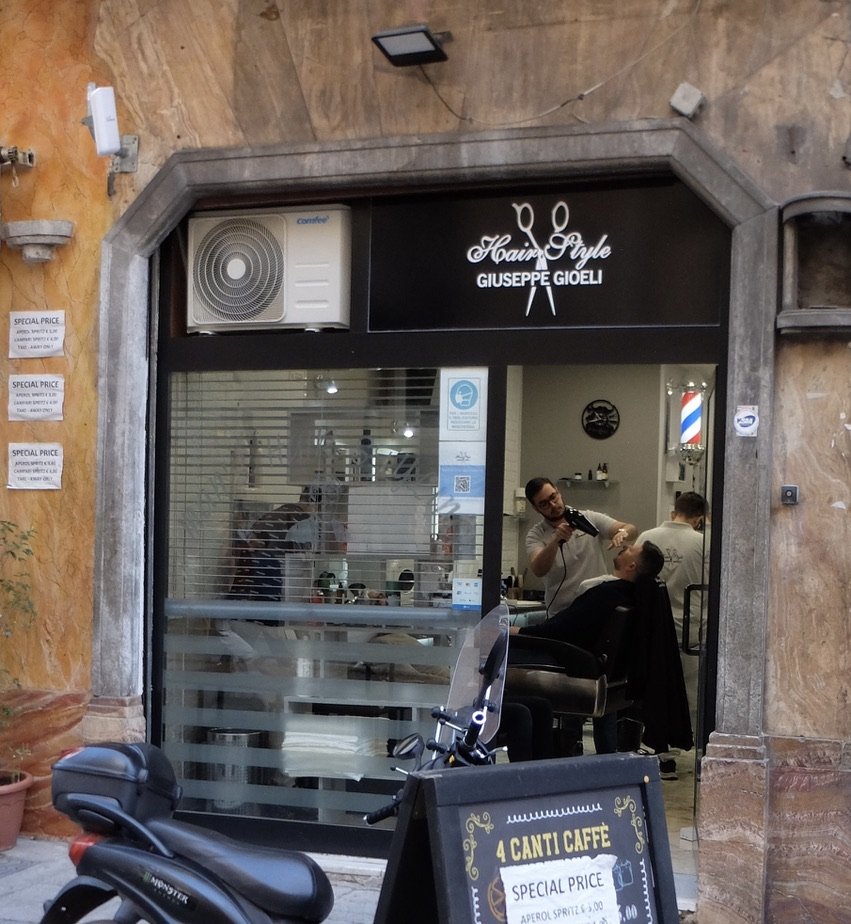
-
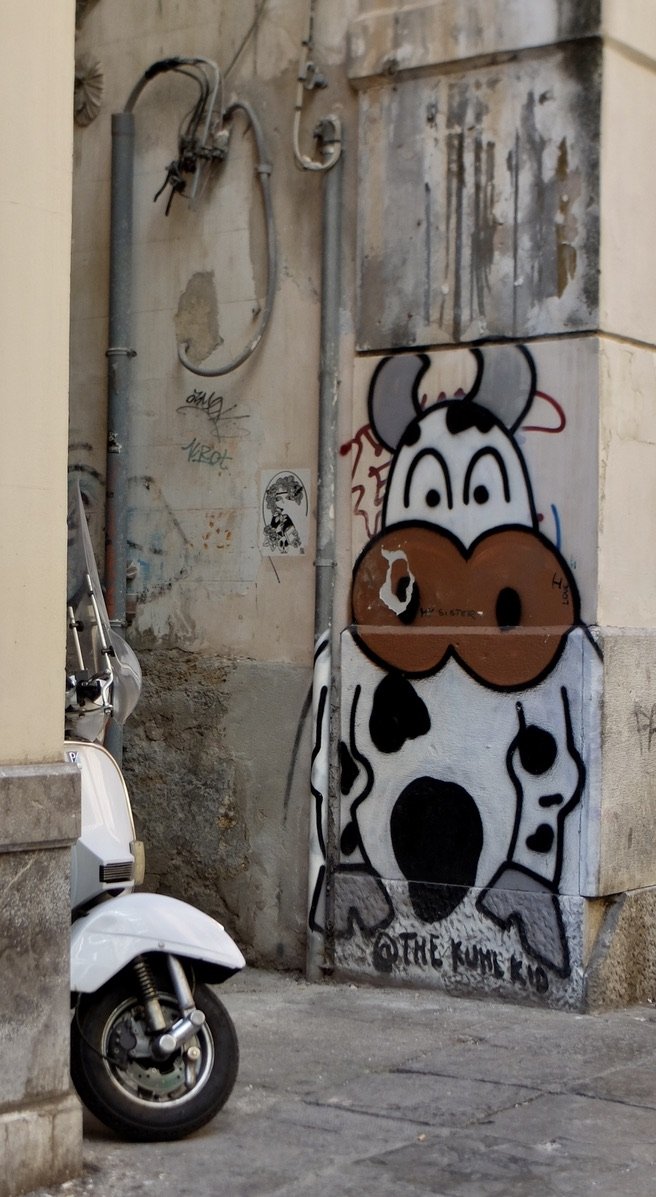
-
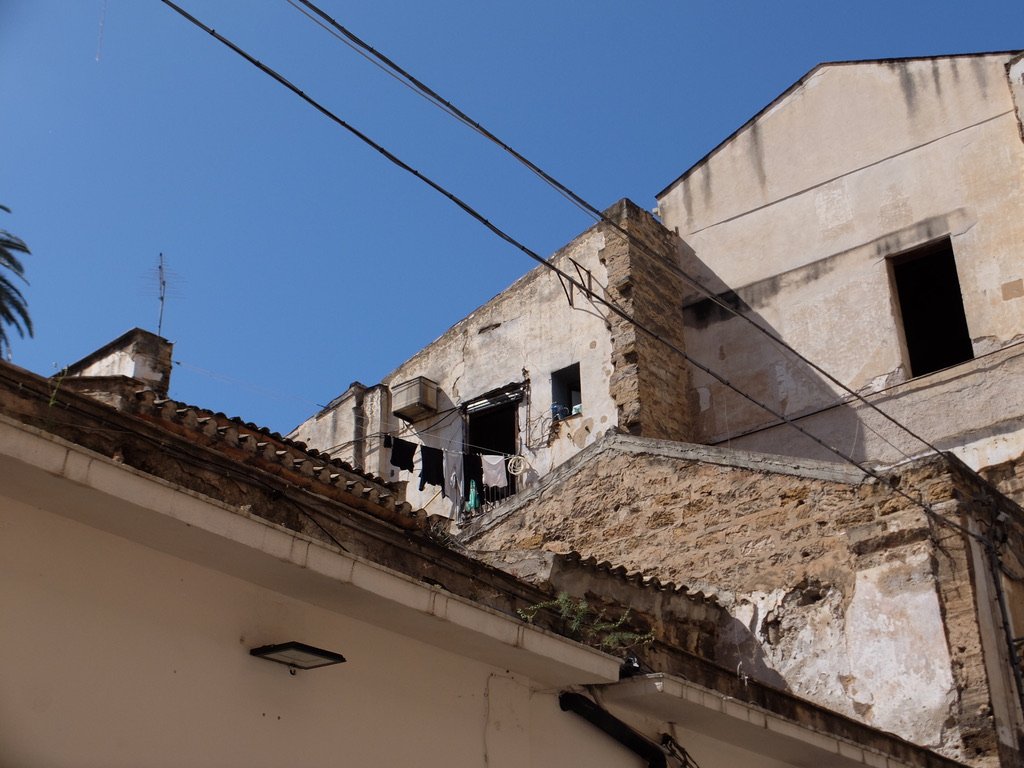
-
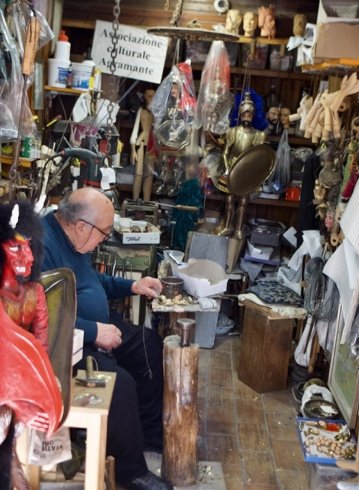
Gaetano knew Argento Pupie Pupari - famous puppeteer. Argento invited us in to the workshop.
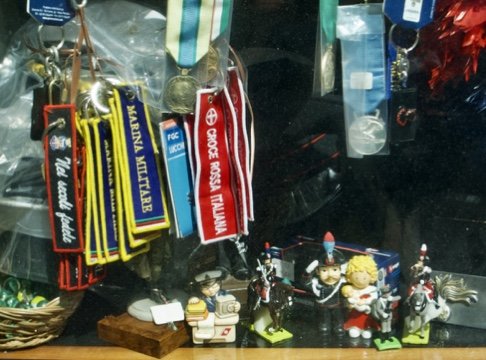
One of several shops with miltary & police paraphernalia.
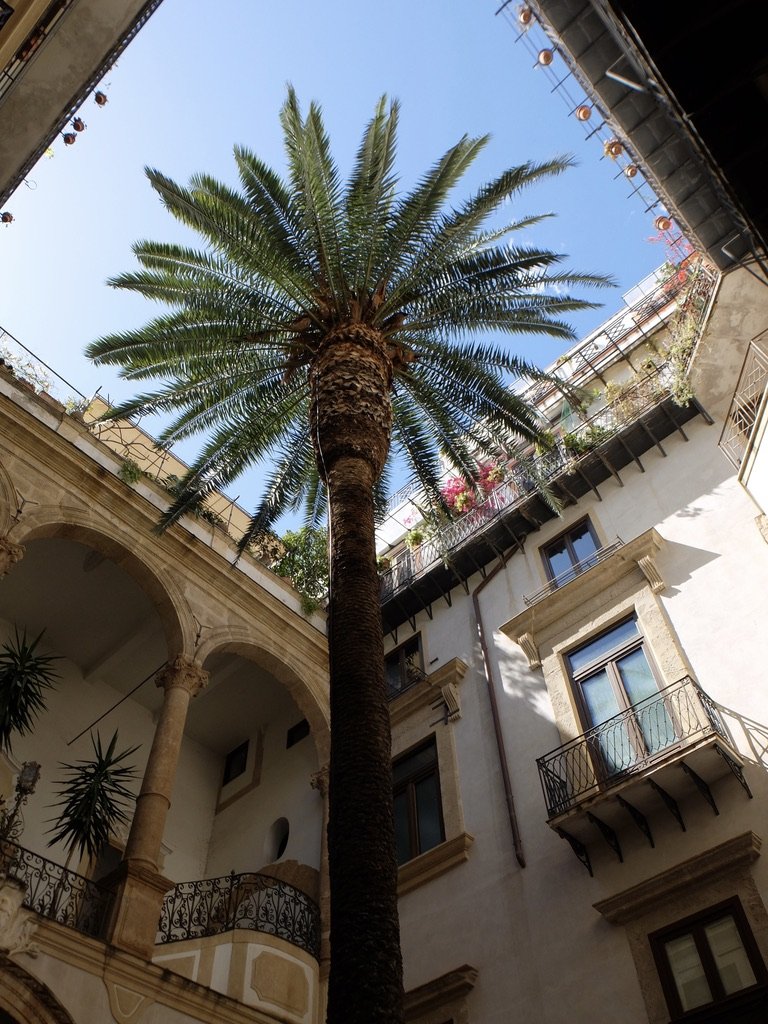
This buuilding housed a workshop that handcrafted incredible presepe (Italian nativity scene) & other ceramic items.
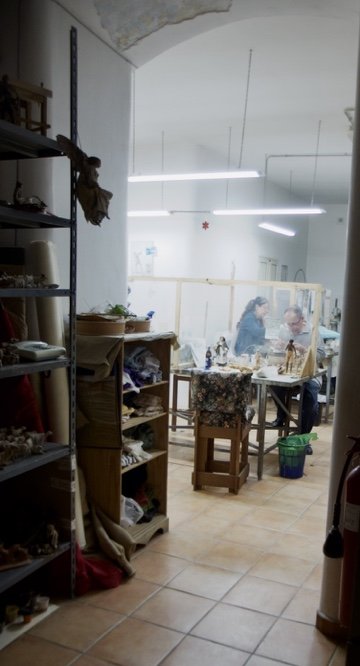
Gaetano knew the owners & we were invited in.
They were listening to Motown as they worked.
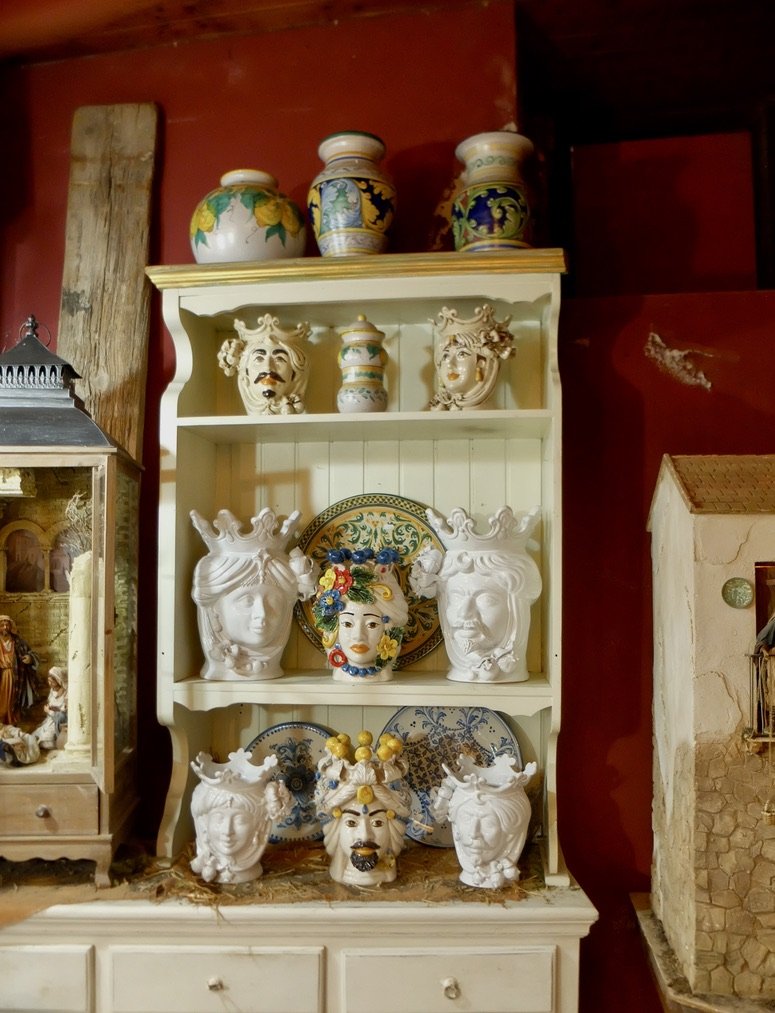
-
We were told many variations of the folk tale behind the ceramic heads that tells of “…a Saracen merchant who falls in love with a beautiful local girl. When their love affair was discovered, her family cruelly punished them both by beheading them. Their heads were then turned into vases and hung as warnings on a balcony.”
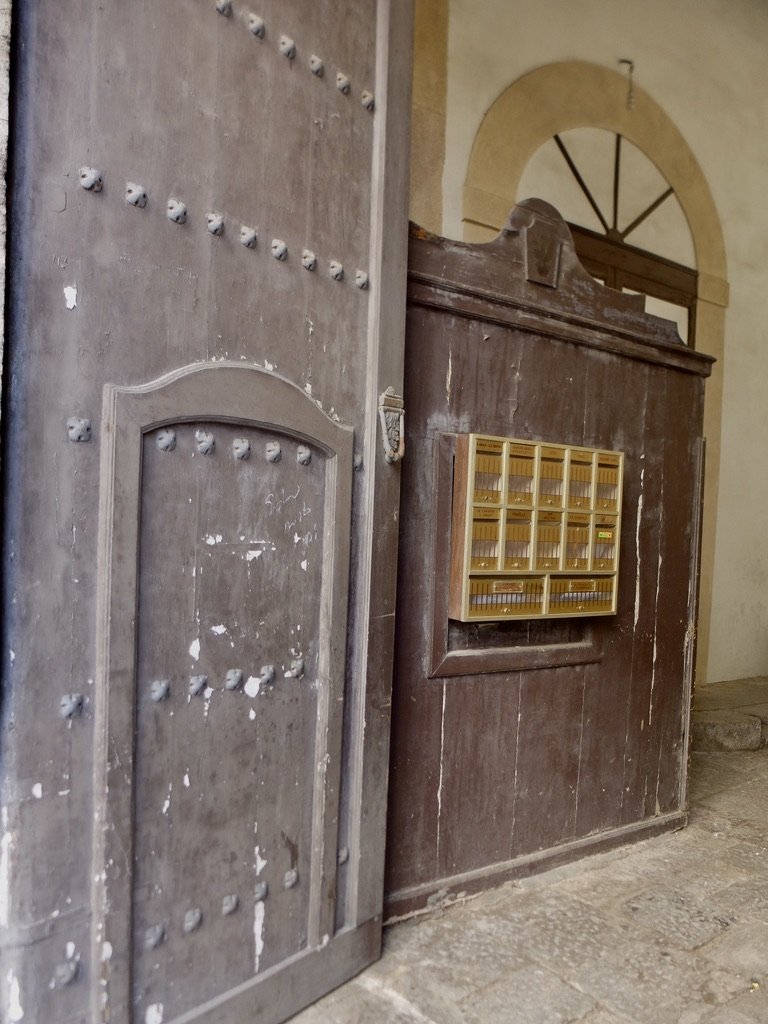
-

Palermo Cathedral.
Once again here is a mix of architectural styles; Norman, Moorish, Gothic, Baroque…
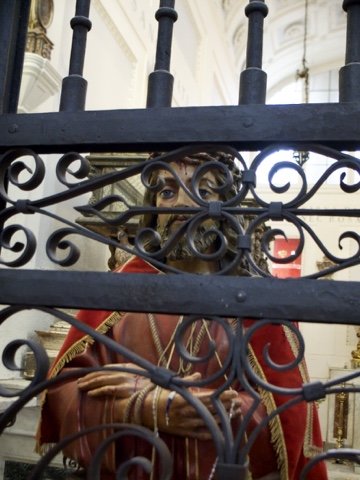
This & many other saints were banished to this room. After being beseeched with many prayers, they didn’t come through in ridding Palermo of a deadly plague in 1625.
There’s a major chapel within the cathedral of Palermo which holds the relics of St Rosalia. An apparition instructed that if her remains were carried around the city three times the plague would cease. It did. Rosalia has since been venerated as the patron saint of Palermo.
If you are interested in Firebird Travel, our guides or drivers, please contact me directly.